BUJUMBURA, March 10th (ABP) – In the landscape of Burundi, Lake Tanganyika, once considered a symbol of serenity, has become a tragic witness to the ravages resulting from climate change. The El Niño phenomenon unleashed torrential rains, causing water levels to rise, thus destroying homes, crop fields, schools, and vital infrastructure. Vulnerable communities now find themselves in total desolation and confronted with a devastating reality where every drop of water seems to carry with it lost memories. The ensuing landslides only added fuel to the fire, sweeping away hope and dreams. Around 30,000 disaster victims do not know where to turn. Faced with this unprecedented environmental crisis, affected people are struggling for survival in a landscape transformed into a wasteland.
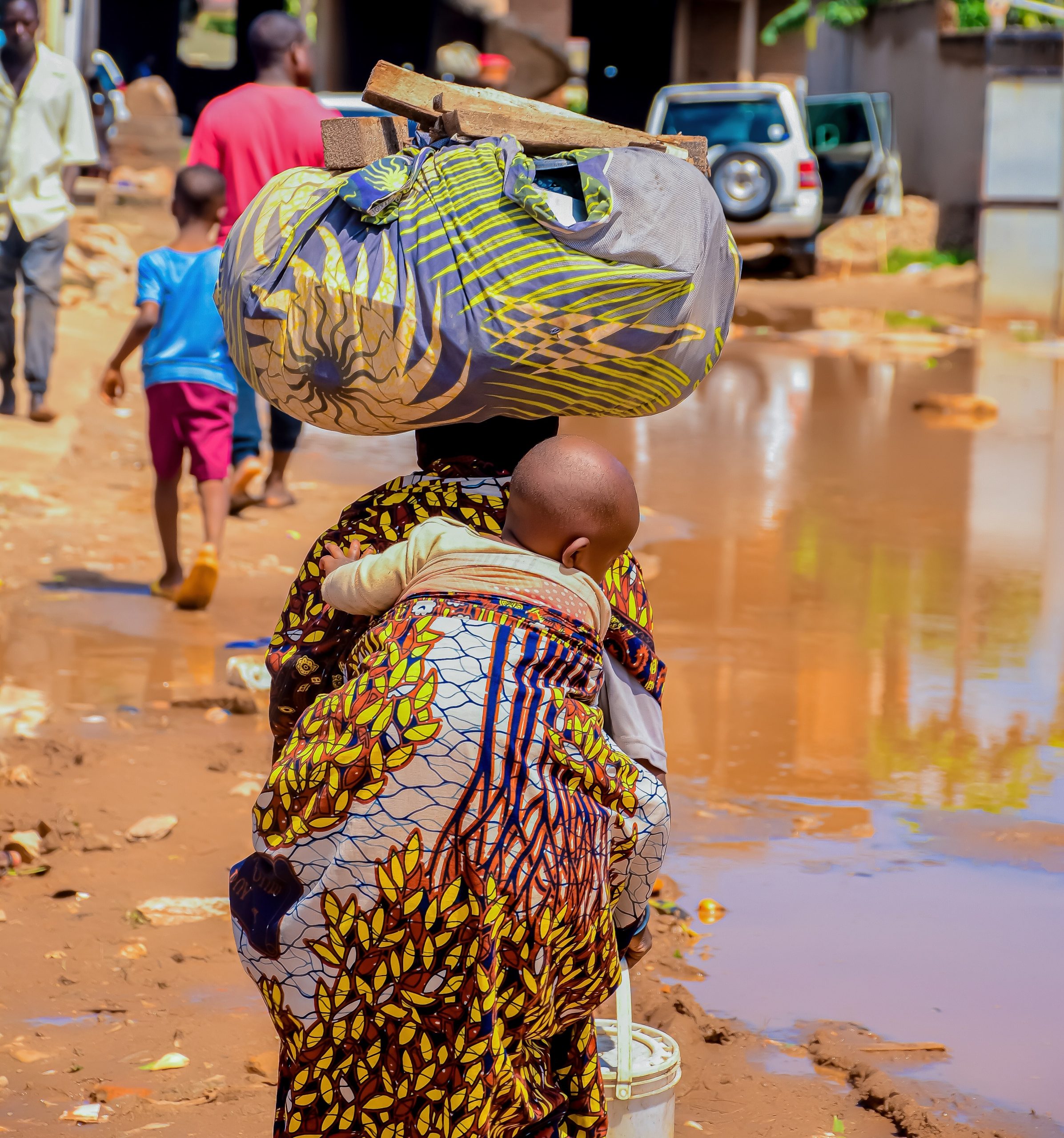
According to the UN NGO OCHA, the El Niño phenomenon has caused torrential rains, flooding, and landslides. Since the rainy season in September 2023, more than 237,000 people have been affected (including 55% of women). There have been more than 42,000 displaced people (including 57% of women), 29 deaths, and 175 injuries. Furthermore, from January to mid-April 2024, more than 179,200 people were affected and over 31,200 people were displaced. The most affected provinces are Cibitoke, Bubanza, Bujumbura, and Rumonge.
The Government of Burundi and the United Nations system issued a communiqué on April 14, 2024, acknowledging the emergency situation and calling for greater mobilization to meet urgent needs. A response plan to the flooding and the effects of the El Niño phenomenon has been drawn up, targeting 306,000 people in urgent need of humanitarian assistance.
According to the International Organization for Migration (OIM), Residents were forced to seek refuge in schools, churches, or sometimes in improvised makeshift shelters along the roadside in the rural zone of Gatumba, Bujumbura province. In addition to losing their homes, many lost their livelihoods as the floods destroyed crops and damaged businesses.
According to the Displacement Tracking Matrix (DTM) coordinator, Djiguiba Camara, 89,031 households had their fields destroyed and flooded. 49,410 houses were destroyed and damaged, while 29,814 others were flooded, and 1,535 latrines were destroyed and flooded. In addition, 671 classrooms were destroyed and flooded, as well as 16 health facilities. He was speaking on June 6, 2024, during a technical training workshop to build the capacities among members of the Durable Solutions Working Group (GTSD) organized by the Ministry of National Solidarity, Social Affairs, Human Rights and Gender, in collaboration with the Regional Durable Solutions Secretariat (ReDSS). During his presentation on climate change, disasters and displacement in Burundi, Camara highlighted that the number of people affected and displaced by disasters in Burundi since 2018 to 2024 amounted to 885,799 and 182,090 respectively. According to him, the number of people injured and dead following these disasters included 698 people injured and 156 dead from 2018 to 2024.
The locality of Gatumba was severely affected by these floods, hitting more than 2,000 households, representing approximately 10,000 people. At the same time, Gabaniro-Kirasa village suffered landslides that affected approximately 2,500 people. In response to these crises, the government decided to relocate the victims in order to provide them with shelter and security. Displaced households from Gatumba were relocated to the Gisagara site, located in Mubimbi commune, Bujumbura province. Similarly, residents affected by the landslides in Gabaniro village were transferred to the Gitaza Trades Center in Bujumbura province.

A joint study by Burundi National Statistics Institute (INSBU) and the United Nations Development Programme (UNDP) paints a grim picture. According to the latter, since early the rainy season in September 2023, the El Niño phenomenon has caused torrential rains, floods, hail, strong winds, and landslides in Burundi. The heavy rainfall has notably caused the waters of Lake Tanganyika to rise, flooding vast coastal areas. As of May 2024, there were 297,7463 people directly affected by the consequences of this climate phenomenon, 54% of whom were women; 47,739 people were displaced, 56% of whom were women; 13,335 houses were flooded; and 11,200 houses were destroyed or damaged. The same study also highlights that 33 deaths, including 7 from crocodile attacks, have been recorded.
Burundi is listed among the 20 countries most vulnerable to climate change globally. The risks associated with these climate changes pose a constant threat to all sectors of the country. The infrastructure sector is hard hit, with annual losses estimated at USD 30 million, just for the Imbo plain. According to a study presented by the UN, Burundi is recognized as one of the 20 countries most vulnerable to climate change. It suffers economic losses exceeding USD 80 million each year. However, Burundi suffers these tragedies while, according to the World Bank (WB), it emits less than 0.02% of greenhouse gases (GHGs) that contribute to global warming.
When Nature Becomes the Enemy: Crucial Lessons from Experts on El Niño and Its Devastating Consequences
As alarming figures on the impacts of El Niño emerge, it is essential to understand the very nature of this climate phenomenon. Various climate experts shed light on the underlying mechanisms of this mysterious and complex phenomenon.
Dr. Athanase Nkunzimana, a lecturer and researcher at the University of Burundi (UB), is an expert in risk prevention and hydrometeorological disaster management. He is also a member of the Center for Research and Studies on Development in Societies in Reconstruction.
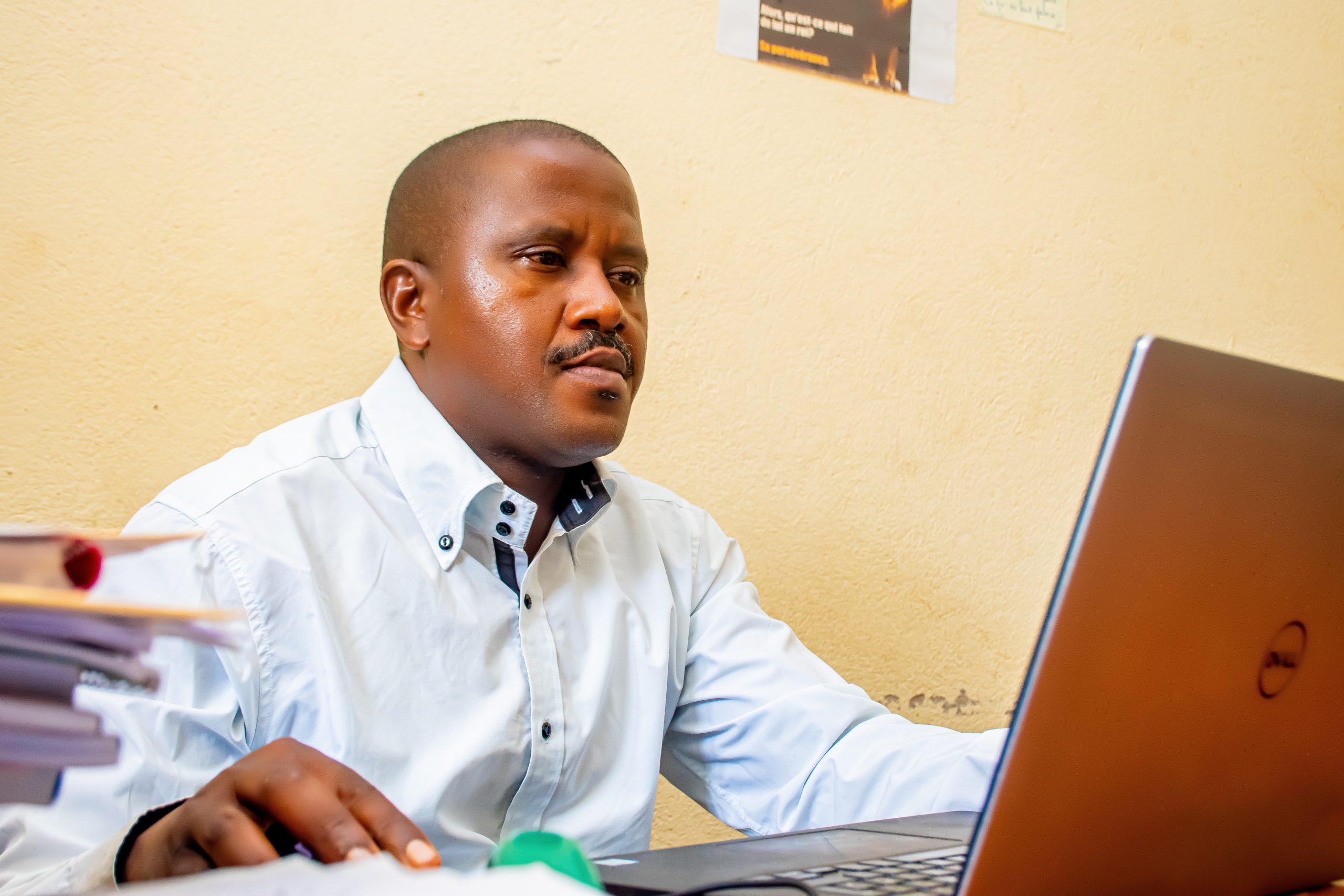
He indicates that the El Niño phenomenon is geolocalized in the Pacific Ocean. It is linked to the difference between the temperature of the water and the surface, which changes from time to time, sometimes on the eastern coast and sometimes on the western coast of the Pacific Ocean. According to him, this phenomenon often occurs during the months of November to January. “That’s why the name El Niño means ‘Baby Jesus,’ because the first researchers observed it with the birth of Jesus Christ,” he explains.
According to this expert, in the tropical zone, especially in the Pacific Ocean, there are always trade winds. The southern and northern trade winds, which blow from east to west, push the water westward. Over time, there are temperature shifts in the Pacific Ocean, where we see a rise in temperature that borders the Latin American coast. This is when intense events are observed in the Pacific Ocean and also in Latin America. He explains that there is a direct link between the El Niño phenomenon and intense or extreme rainfall in East Africa.
Tharcisse Ndayizeye, for his part, is an environmentalist and university lecturer and researcher. He defines the El Niño phenomenon as a seasonal phenomenon that causes certain weather patterns to change, and most often, to increase. He further indicates that this phenomenon is linked to climate change.
The rising waters of Lake Tanganyika have caused a devastating tragedy in the locality of Gatumba and along its shores, stretching from Gatumba to Kabonga in Nyanza-Lac commune, Makamba province. The floods have swept away not only vital infrastructure but also lives, leaving behind a landscape of desolation and suffering. The once serene inhabitants now find themselves confronted with a cruel reality where their memories are being swallowed up by the floodwaters. Ndayizeye emphasizes that the causes of this rise are multiple and complex. From climate change to human activities, each factor contributes to this alarming phenomenon, he explains.
“Lake Tanganyika is fed by several major rivers such as Rusizi, Maragarazi, Runangwa, and Ruvubu, which contribute a significant amount of water estimated at over 20 km³ per year. Furthermore, precipitation influenced by climate change and the El Niño phenomenon plays a key role in hydrological dynamics,” Ndayizeye explains.
For him, several natural and anthropogenic phenomena influence the water level of Lake Tanganyika. Among these phenomena, he mentions climate change, which has a significant impact on rainfall patterns in the region, which can lead to variations in the lakes’ water levels. The El Niño phenomenon can also influence weather conditions in the region, leading to fluctuations in water levels.
According to this environmental expert, deforestation in the Lake Tanganyika watershed also contributes to soil erosion and increased sedimentation in the lake. This can reduce the lake’s capacity to hold water and affect its quality.
Sedimentation and agricultural activities influence the rise in Lake Tanganyika’s water levels. “Intensified agricultural activities on the surrounding mountains also increase the amount of sediment flowing into the lake. Erosion caused by these agricultural practices can lead to sediment accumulation, which reduces the lake’s depth and alters its ecosystem,” he explained. Sediments from Lake Kivu and surrounding rivers are also cited as causes of this rise in Lake Tanganyika’s water levels. “The rivers that feed Lake Tanganyika, including those from Congo, Tanzania, Zambia, and Burundi, also carry sediment. These deposits can contribute to the gradual rise in water levels,” he revealed.
Ndayizeye also states that the relatively small size of the Rukuga River, Lake Tanganyika’s main outlet, means that there is less water being discharged compared to the inflow from rivers and precipitation. This situation can lead to water accumulation in the lake, especially if inflows exceed outflows, he says.
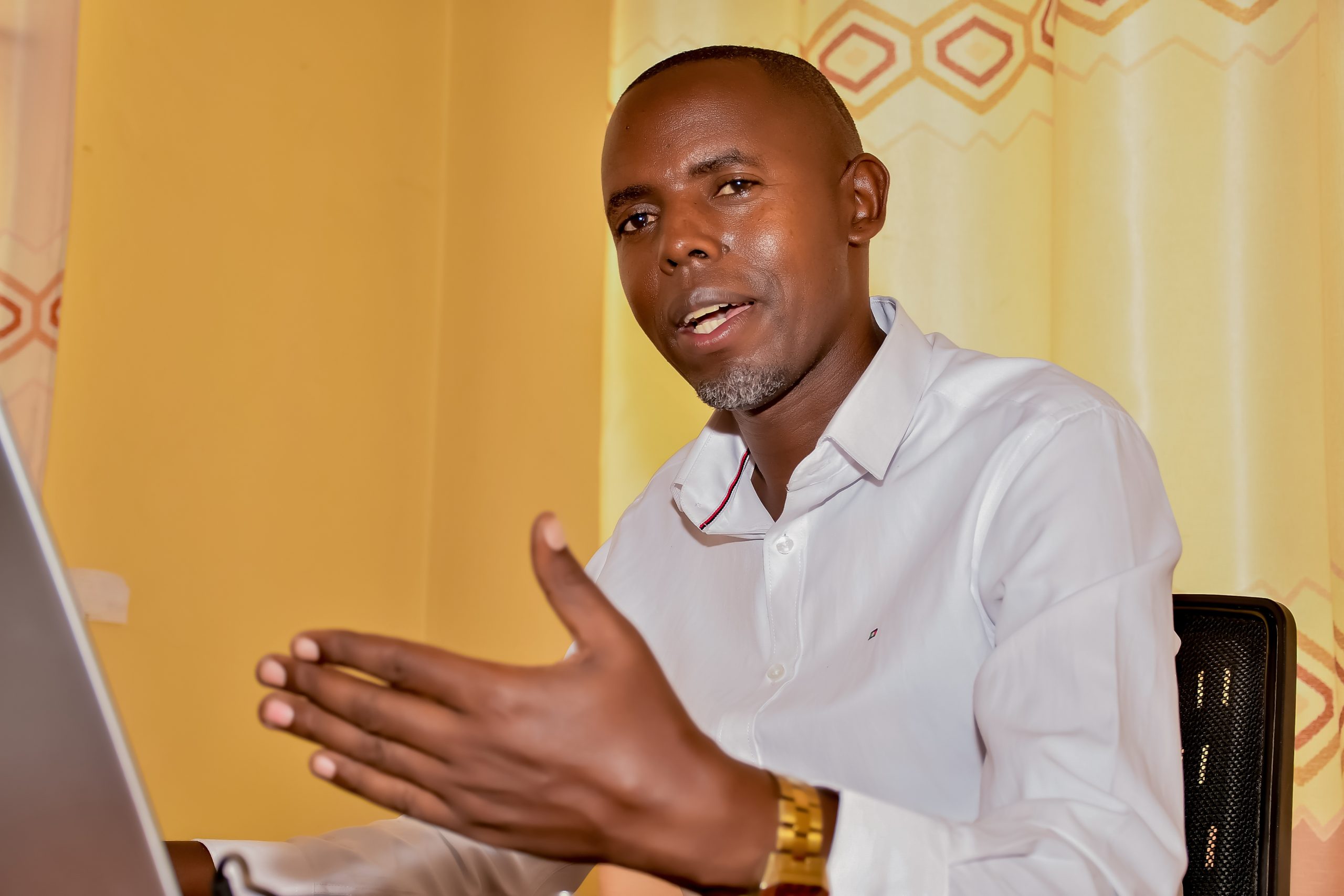
Devastated ecosystems, a crippled economy
The floods resulting from the rising waters of Lake Tanganyika have caused a multitude of interconnected consequences. These are not limited to material damage; they profoundly affect communities. Climate experts report that entire families have lost their homes, farmland, and livelihoods. Anxiety and uncertainty reign as residents desperately try to rebuild their lives amid the rubble left by the disaster.
Environmental expert Ndayizeye points out that the rising waters of Lake Tanganyika, amplified by the El Niño phenomenon, have had devastating consequences for Burundi. He discloses that essential infrastructure, such as schools and hotels, have been destroyed, leaving entrepreneurs in dire straits. Agriculture, the mainstay of the local livelihood, has suffered the full brunt of the floods, with fields wiped out, he deplores. Tourism and other economic activities are in decline, adding that the port of Bujumbura has also been affected by the situation. According to him, entire families are now forced to rent precarious housing after losing their homes, which plunges them even deeper into a spiral of financial insecurity.
Ndayizeye also emphasizes that the rising waters of Lake Tanganyika have had significant repercussions on the psychological health of those affected. “The psychological consequences for those affected by these environmental changes should not be underestimated. The stress related to economic uncertainty and the loss of housing can lead to an increase in mental health problems such as anxiety and depression,” he explained.
He reveals that the flooding caused by the rising waters of Lake Tanganyika has led to a shift in priorities from development projects to humanitarian initiatives to rescue thousands of people in distress. This situation has a negative impact on the Burundian economy as efforts are now focused on disaster relief rather than economic development. Households and authorities are facing major challenges such as finding shelter and food, which hinders any development activity, he demonstrated.
In Burundi, the rising waters of Lake Tanganyika, caused by the El Niño phenomenon, have had significant consequences for local communities. Dr. Athanase Nkunzimana highlights several critical aspects related to this issue. He states that these floods have led to the displacement of many households, particularly in the Kibenga Lac region. This phenomenon has forced residents to leave their homes and seek refuge elsewhere.
For him, the mass displacement has created an unparalleled humanitarian crisis, with families losing not only their homes but also their livelihoods. According to him, the tourism sector has also been affected. Several hotels located along the shores of Lake Tanganyika have been forced to close due to the flooding. Dr. Nkunzimana points out that this situation has a direct impact on the economy because, he emphasizes, tourism is an important source of income for many riverside communities. The closure of tourist facilities has also reduced employment opportunities and significant tax revenues. Furthermore, some roads have become impassable due to rising water levels, making transportation difficult. Dr. Nkunzimana notes that these problems are not limited to Burundi. They have also affected the neighboring Democratic Republic of Congo (DRC), particularly in the Kalemi region, highlighting a broader regional problem linked to climate change. “The rising waters of Lake Tanganyika have caused floods, which have, in turn, triggered a complex set of negative effects on the communities living along Lake Tanganyika, affecting both their way of life and their local economy,” he emphasizes.
Dr. Nkunzimana reviews the psychological effects of these weather variations. “The population, already affected by flooding, is facing an alarming situation in 2024, when the water levels of Lake Tanganyika have exceeded those of the previous year (2023). This situation has led to growing psychological concerns among residents, especially those who are resisting by trying to adapt,” he says. Attacks by wild animals, such as hippos and crocodiles, amplify fear and panic. Many victims have taken out loans to acquire their homes, which creates anxiety about their ability to repay those loans, especially since their homes are submerged and they find themselves in a financial incapacity, the expert adds.
Victims Face the Inexplicable Situation
The torrential rains generated by the El Niño phenomenon not only caused flooding, but also triggered landslides. These landslides had a catastrophic impact on Burundi, affecting the lives of thousands of people. Approximately 2,500 households in the Gabaniro-Kirasa locality and 229 others in the Nkenga-Busoro locality lost their homes as a result of these tragic events.
An important and particularly alarming aspect of this natural disaster was the destruction of a hydroelectric power plant built in the area. This vital infrastructure was completely wiped out by landslides, depriving the community of a source of energy. Faced with this tragedy, the victims met at the scene expressed their incomprehension as to the origin of these natural phenomena. Many attributed these events to supernatural beliefs such as witchcraft.
This situation highlights the need to educate communities about the real causes of natural disasters in order to mitigate misinformation and encourage an appropriate crisis response.
In that regard, environmental expert Tharcisse Ndayizeye reassures. He emphasizes that landslides are natural phenomena that result primarily from the soil’s pedological composition. “In a soil profile, we can observe different layers, such as clay and sand. In the nature of the soil, these variations play a major role in land stability,” he explains. According to him, when water infiltrates the soil, especially after heavy rainfall, it can lead to instability. He adds that human activities downstream can also amplify this risk. “For example, most of the roads leading to Bujumbura are often threatened by landslides. It’s the water that penetrates the soil, thus weakening the earth’s structures,” he says.
According to this environmental expert, the process occurs when water allows a detachment of one layer of soil from another. This phenomenon is accentuated by the fact that some parts of the mountains do not have surrounding soil characteristics. He also believes that it is essential to conduct in-depth studies before any construction in order to assess the risks of landslides. The nature of the soil plays a major role in the stability of structures, and geotechnical studies must be carried out to identify variations in soil composition, he says. Furthermore, he believes that a rigorous assessment is essential to guarantee the safety of constructions.
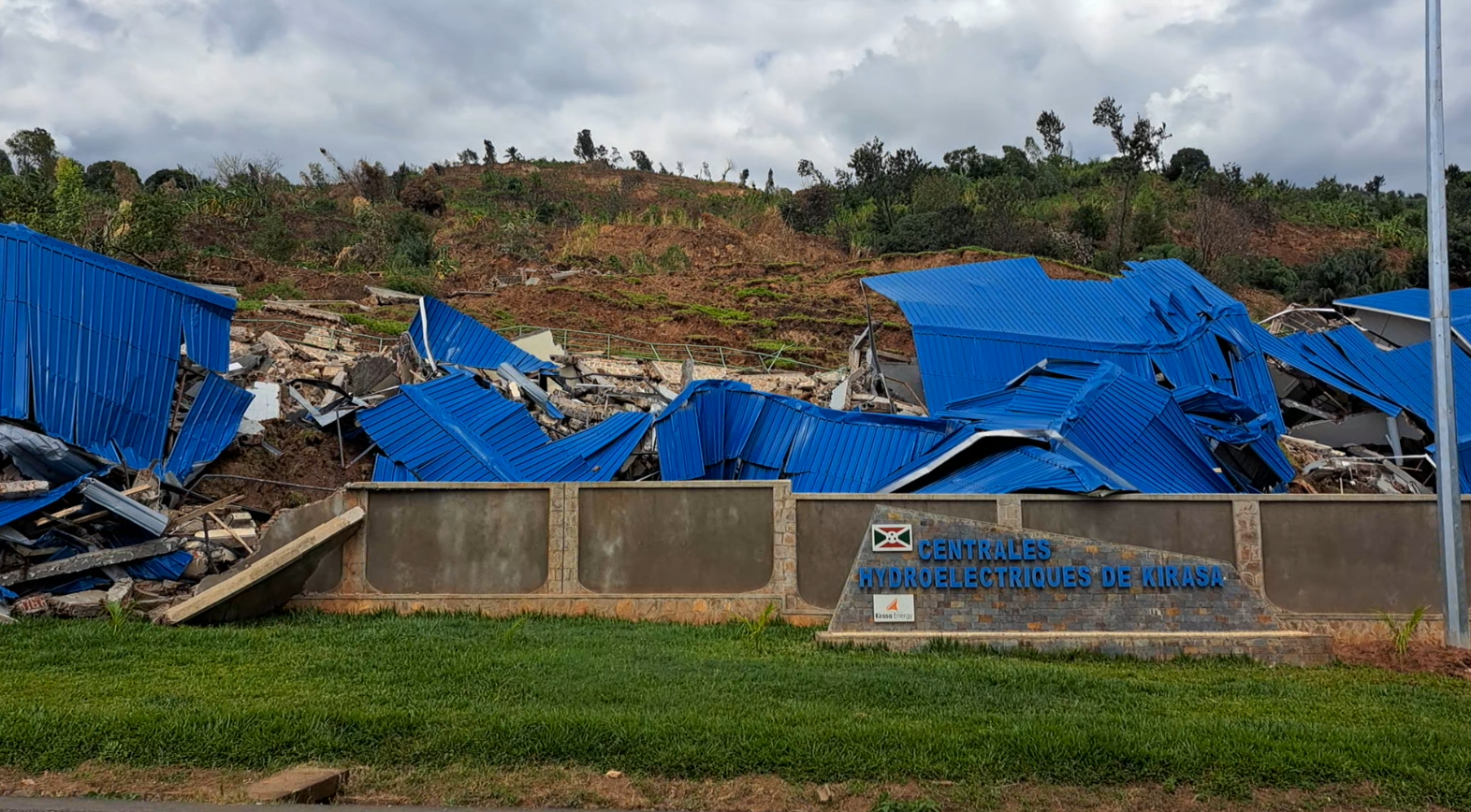
A joint study by INSBU and UNDP paints a grim picture
The Burundi National Statistics Institute (INSBU) and the United Nations Development Programme (UNDP) jointly produced a study assessing the socioeconomic impacts of the El Niño phenomenon, entitled “Studies on the socioeconomic impacts of the El Niño phenomenon in Burundi.” This study paints a bleak picture of the results. A total of 1,687 households were surveyed, including 858 in flooded areas and 829 in non-flooded areas. The El Niño phenomenon particularly affected East African countries in 2023 and 2024. In Burundi, the impacts on agriculture, food security, health, housing, infrastructure, and the livelihoods of vulnerable communities are undeniable. Agriculture was particularly impacted by El Niño, with 71% of households reporting an impact on their agricultural activity.
The most affected areas, including Muhuta, Rumonge, Nyanza Lake, and Bugarama, with 81% of households, report being impacted. According to the study, the cost of damage to agriculture is estimated at 404 billion BIF, or USD 141 million, while the cost of lost income in agriculture is estimated at 381 billion BIF, or USD 133 million. The cost of damage to livestock is estimated at 35 billion BIF, or USD 12 million, while the cost of lost income in livestock production is estimated at 27 billion BIF, or USD 9.5 million.
Household debt has increased significantly, with almost half of households in debt as a result of the decline in income from traditional sources, agriculture in particular. Food security has also been compromised, with a reduction in food self-sufficiency due to the decline in agricultural production and rising food prices. Approximately 73% of households surveyed fear they will not have enough food. Education has also been affected, with a decrease in the average number of children enrolled in school, primarily due to the need for children to work to support the family income.
According to the same study, the floods caused by El Niño in Gatumba led to massive job losses. Approximately 81% of displaced household members lost their jobs, significantly reducing their income. The majority of displaced households saw their income decrease by more than half, and 98% do not have sufficient resources to cover their expenses, leading to increased debt dependence.
Stifled Laughter: Children Facing the Climate Crisis
The El Niño phenomenon triggered floods and landslides that brought grief to Burundi. The immediate effects of these weather variations on children’s daily lives are multiple and interrelated, affecting not only their physical health, but also, and more importantly, their psychological and social well-being.
The spokesperson for the National Federation of Associations Engaged in the Field of Childhood in Burundi (FENADEB), Ferdinand Simbaruhije, stated that the floods and landslides caused by the El Niño phenomenon have devastating consequences on children’s daily lives. According to him, these events lead to the dislocation of families and cause hunger, poverty, and an increase in the death rate. Furthermore, children are exposed to health risks such as cholera and dysentery due to poor hygiene conditions. He also emphasizes that these children suffer the loss of their right to development, with a lack of clothing, school kits, and housing, which, in a way, compromises their education and overall well-being.
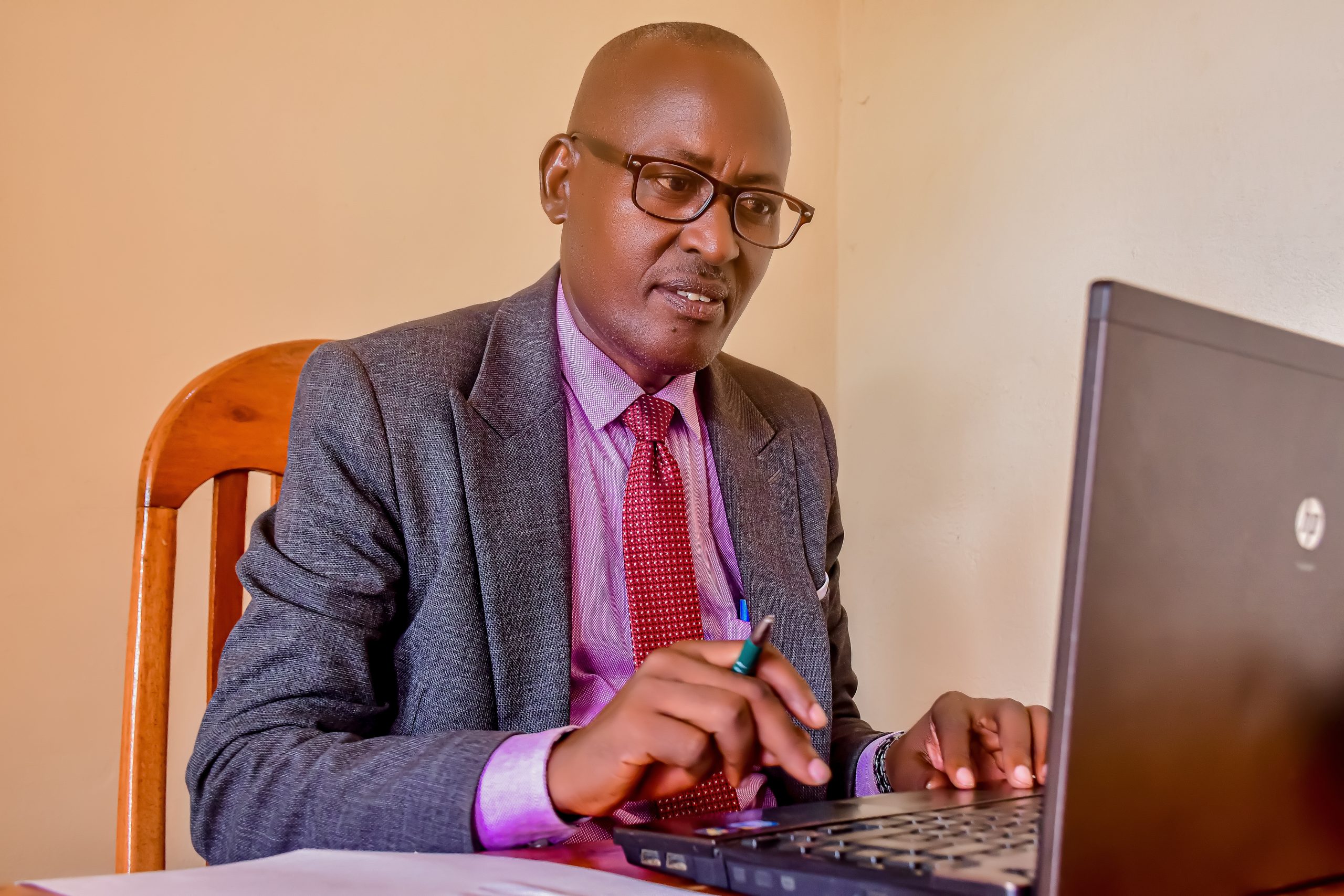
According to him, natural disasters significantly increase children’s vulnerability because they disrupt their family and social environment when parents or guardians are themselves in a vulnerable situation. Their ability to protect and supervise children is thus seriously compromised. He specifies that this dynamic exposes young people to increased risks of violence, begging, and exploitation. Moreover, he adds, the overcrowding resulting from these situations fosters the emergence of gender-based violence, thus jeopardizing their physical and psychological safety. These combined factors create an environment where children are particularly exposed to abuse and forms of exploitation.

Simbaruhije therefore believes that to strengthen the resilience of Burundian communities in the face of climate change and protect the rights and well-being of children, it is essential to develop a comprehensive map of available services, which could facilitate, in some way, the referral of beneficiaries to the appropriate resources. This must include advocacy to avoid duplication of efforts in intervention areas, which could ensure efficient use of resources, he explains.
It is crucial to promote the installation of hand washing devices in regions vulnerable to Mpox, integrating this initiative into a broader framework of health prevention related to the impacts of weather variations, he believes. Furthermore, he mentions that material support for schools and assistance to homeless households must also be prioritized to ensure a stable environment for children. Finally, he emphasizes that building the capacity of community volunteers on child-friendly spaces and guidelines for managing educational reception spaces is essential to ensure the effective and sustainable implementation of these initiatives.
In the Gisagara site in Bujumbura province, approximately 2,000 households, made up of 10,000 people displaced following the floods in Gatumba, a locality affected by the El Nino phenomenon, face significant challenges in educating their children. During a recent visit to the site, it was noted that there is no school available at the site. Children are thus forced to travel nearly 6 km to get to school. This long distance is a major obstacle for families, which often prefer to keep their children close to them rather than allow them to venture on a risky journey. “Our children have to cross a large, uninhabited mountain range to get to school. In case of rain, they have no shelter for protection, which makes us fear for their safety. In addition, lightning strikes frequently in this area,” parents interviewed at the site for displaced persons worried.
These testimonies highlight the fear and anxiety felt by parents about the dangers their children are exposed to on their way to school. They believe it is better for their children to stay close to them than to expose their lives at risk. Those parents demand that a school be built on the site to ease this burden and ensure safe access to education for their children.
Abdoul Karim Muzinga, the head of the site, indicates that, as a manager, he is aware of the situation and has already made a plea to the decision-making bodies. The Minister responsible for the Interior and the one in charge of National Education are aware of this issue and ready to intervene.
Regarding the harassment children face in getting to school, where they travel long distances, Muzinga said that the two authorities have already promised to install mobile classrooms on the site to facilitate access to education for students in grades 1 to 3 who are not yet ready to travel long distances. “We have already completed the installations.” We are doing everything possible to find teachers, benches, teaching materials and other related equipment,” he reassures.
Natural disasters linked to climate change: a factor increasing the risk of sexual exploitation and abuse among women and girls
Natural disasters triggered by climate change, such as floods and landslides, significantly increase girls’ vulnerability to sexual abuse and exploitation. According to Alice Nindorera, legal representative of the Forum for African Women Educationalists (FAWE), these events lead to deterioration in living conditions. They make these populations more susceptible to sexual abuse and exploitation. The demolition of homes and the loss of livelihoods create an environment conducive to exploitation.
Furthermore, she believes, the lack of security and forced displacement to the extent of settling in tents, aggravate this already precarious situation. For Nindorera, natural disasters often lead to mass displacement of affected people. These individuals, often deprived of their material possessions, find themselves in an extreme vulnerability situation. When they are grouped together in camps, they live in overcrowded conditions. As a result, this situation exacerbates their precariousness, particularly for girls and women.
Nindorera explains that in these overcrowded environments, the risk of exploitation and sexual abuse increases considerably. “The difficult living conditions and the lack of resources, especially financial ones, make these individuals vulnerable to violence. Girls and women are often the most affected by this abuse, due to their already fragile social position,” she reveals.
She emphasizes that the grouping of victims in often confined spaces, leads to a state of idleness. In this context, she explains, wandering behavior is often observed: some seek to beg, while others desperately try to find job to meet their needs. This prolonged inactivity can have adverse effects on the mental and physical health of the individuals concerned.
Nindorera notes that in some cases, victims of natural disasters may be dispersed among host families or other communities. However, she qualifies, this dispersion does not exclude the risk; it, however, increases the exposure of girls and women to sexual violence.
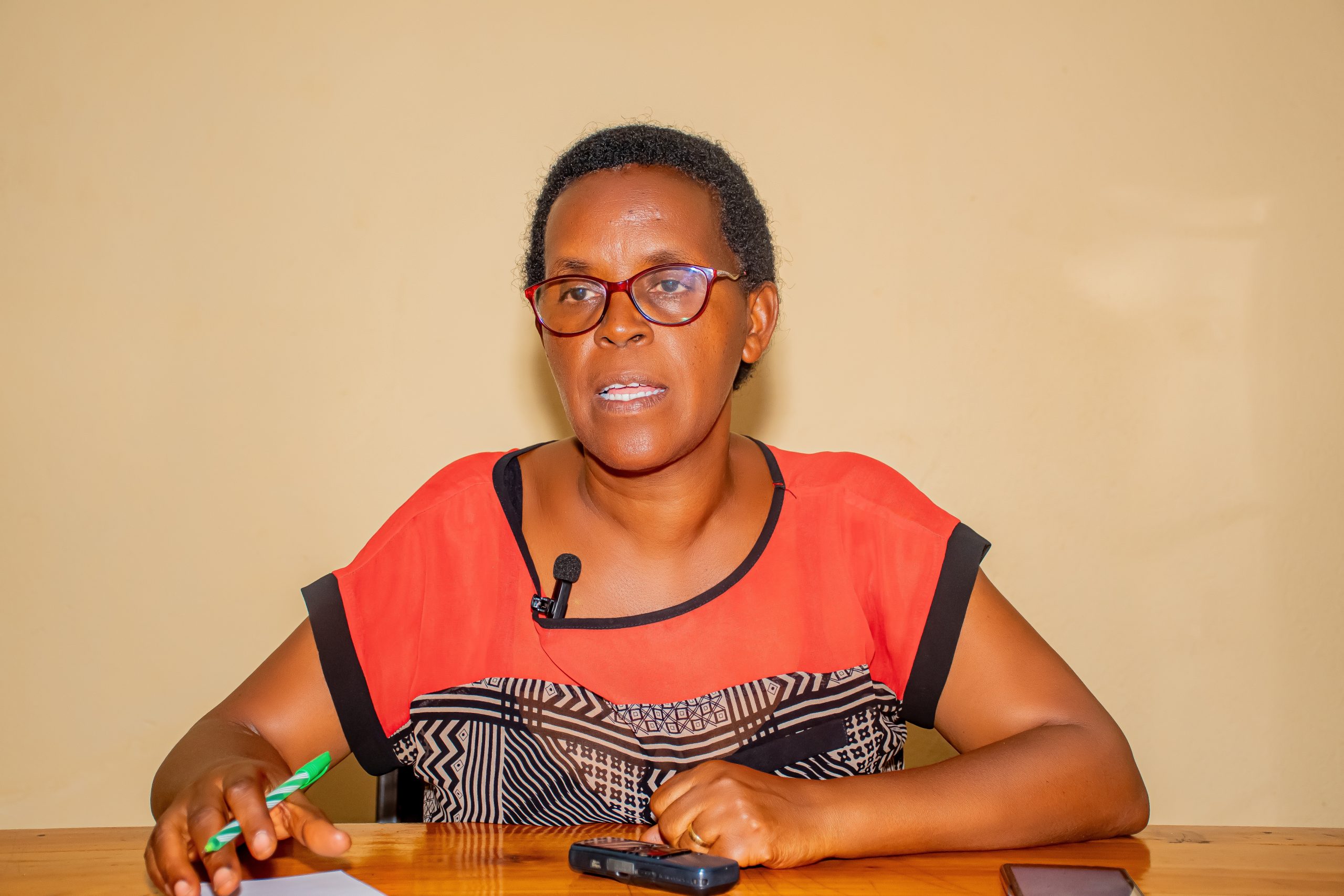
According to Oxfam, the effects of climate change on a given territory are the same for its inhabitants, but men and women rely on different capital and resources to cope with climate change. As a result, women’s vulnerability is greater, as is the impact on their livelihoods. The degradation of natural resources caused by climate change has a more drastic impact on women’s livelihoods.
Climate change affects mental health
During natural disasters, efforts are often focused on immediate needs such as food, water and shelter. The invisible scars left by these tragic events can last beyond the physical injuries. In these circumstances, ignoring the mental health of survivors is the same as inflicting a second suffering on them, a burden that could, in a way, paralyze their recovery. It is therefore essential to integrate mental health into these responses to ensure a complete, effective, and sustainable recovery.
According to Dr. Godelive Nimubona, a psychiatrist at the Kamenge Neuropsychiatric Center (CNPK), climate disasters such as floods and landslides are disruptive events that affect the well-being of individuals. She notes that these events have significant consequences for mental health. They cause psychological disorganization and deteriorate quality of life by amplifying mental disorders. “During floods, watching your house collapse and your children in danger is a deeply traumatic experience. Whether you are at a distance or inside the house, this situation generates intense pain, as if your heart were being pinched,” she laments.
Dr. Nimubona further explains that victims of weather variations find themselves in a situation where they feel unable to cope with the challenges of daily life. “When these individuals consult us, they express a constant fear of another event that could happen again. These are people who have recurring nightmares and constantly relive the same traumatic events,” she reveals.
According to the psychiatrist, this experience plunges them into a state of hyper vigilance where every moment is tinged with constant panic, as if the danger could happen once more. Their daily lives are marked by a generalized alert that hinders their ability to go about their daily activities normally, she explains.
Dr. Nimubona illustrates this situation with a heart-touching testimony. “Here at the center, we have a child aged between 9 to 10, who was the victim of a devastating natural disaster that caused their house to collapse while he was there with his family. Unfortunately, the psychiatrist laments, he lost his two brothers in that traumatic event. Although he survived, he is still in a state of shock and his mental health remains worrying nearly two years after the disaster,” she says. She admits that this child displays intense anxiety to the point of experiencing an irrational fear of entering enclosed spaces. He even has difficulty entering her office for possible consultations. “He fears that these places are also subject to similar collapses,” she emphasizes.
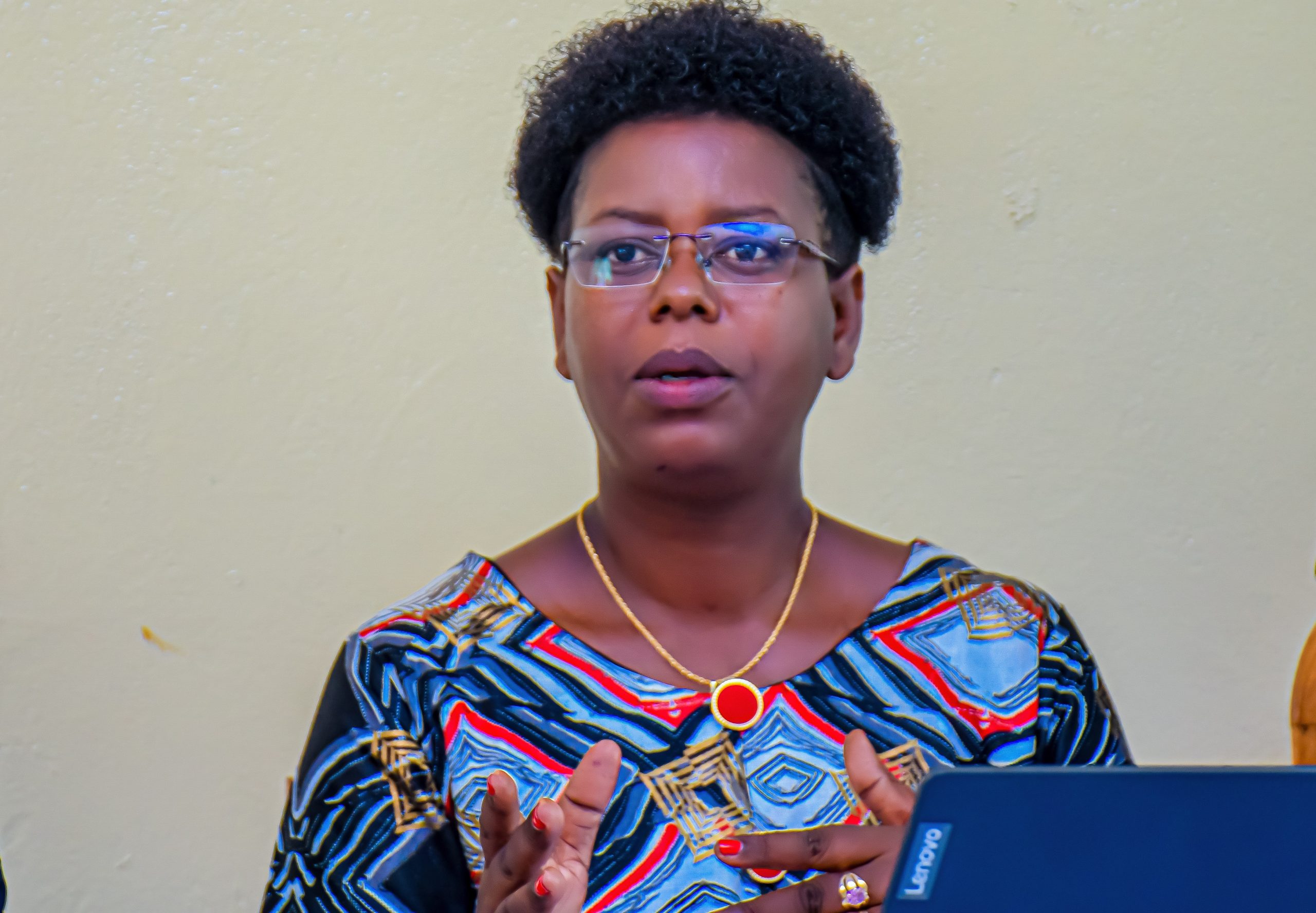
Women and children on the front line facing the impacts of climate change
Natural disasters have varying impacts on different categories of the population. Among them, children and women are often considered particularly vulnerable. Dr. Nimubona explains that this vulnerability can be attributed to several psychological, social, and economic factors. The psychiatrist notes that children have not yet acquired the emotional maturity necessary to understand or manage the stress and fear associated with disasters. “Normally, children are fragile because they haven’t yet acquired the maturity to cope with these traumatic events,” she emphasizes.
For women, she notes that since the mother is always with the child who is continually suffering, this weighs on her and can weaken her mental health. Regarding pregnant women, Dr. Nimubona notes that constantly living in an environment where they feel uncomfortable creates frustrations that affect their children because they share the same feelings as their mothers. “Thus, the child begins to feel unwell even before birth,” she says. She points out that if a mother’s living conditions are precarious, it can hinder her ability to meet her child’s emotional needs. “This lack of emotional attention can weaken the child by hindering, in a way, the normal development of their personality. As a result, when the child faces difficulties, they may have difficulty coping due to an unstable psychological foundation,” she explains. Natural disasters can amplify these adverse effects on pregnant women by increasing the risk of emotional and psychological complications for them and their children, she adds.

Although men are not immune to natural disasters, the psychiatrist says, their ability to cope with these events differs from that of children and women. Furthermore, Dr. Nimubona notes that during floods or landslides, men are often absent from the scene because they are seeking subsidies for their families. In these situations, it is often the women and children who are on the scene, helplessly watching the loss of their belongings.
Stigma: A Major Obstacle to Access the Healthcare for the Mentally Ill
The stigmatization of the mentally ill is a social phenomenon manifested by negative attitudes, prejudices, and discrimination toward these patients. In Burundi, as elsewhere in Africa, the stigma has profound consequences on the daily lives of those affected, particularly with regard to access to healthcare. In addition to social attitudes, there are also other economic barriers that exacerbate the situation.
Dr. Nimubona highlights a profound misunderstanding of mental illness in Burundi, where it is often perceived as resulting from demonic possession or bewitchment. This perception leads many individuals to consult witch doctors and spend much of their time in prayer rooms, which worsens their health. Moreover, she explains, even those who recognize their illness are reluctant to seek help in neuropsychiatric centers because of the associated social stigma. According to her, patients fear being judged or stigmatized by their community, which pushes them to avoid such institutions at all costs.
As a result, she explains, most patients are often forcibly brought in by their relatives because they are unwilling to admit their condition or undergo treatment. Dr. Nimubona mentions that this stigma leads to a lack of value placed on these individuals, who are frequently excluded and stigmatized in society.
Aside from stigma, Dr. Nimubona mentions another major challenge that patients face: the affordability of medication. She points out that these medications are expensive, and most patients must take them for a long time. “This means they must have sufficient financial resources to obtain them regularly, even though many of them live in precarious conditions and cannot afford to buy all the necessary medications,” she laments.
Although support is available for some patients through the intervention of the Ministry of National Solidarity, Dr. Nimubona states that there remains a payment problem that often complicates the situation. As a result, she explains, these patients often return in a state of relapse due to the inability to obtain the required medication.
Dr. Nimubona also discusses certain symptoms, noting that acute stress and post-traumatic stress can generate various symptoms such as loss of appetite, physical pain, general malaise, and sleep disturbances. However, she deplores the fact that those affected do not realize that these manifestations are linked to a traumatic event. They mistakenly believe that these symptoms will disappear on their own over time. Dr. Nimubona also emphasizes the importance of immediate psychological support after a traumatic event. “By intervening early, it is possible to mitigate the lasting effects of trauma and promote effective recovery,” she reassures.
Nadège Inamahoro, a clinical psychologist and member of the Center of Expertise in Mental Health and Psychotherapy, emphasizes that flood victims’ mental health is weakened. Stripped of all their possessions and faced with the distress of their loved ones, these victims lose their will and sense of purpose. “A father, seeing his family homeless and deprived of the bare necessities to survive, cannot remain unaffected by such an ordeal. Social crises and natural disasters have a profound impact on the psychological well-being of victims, making them particularly vulnerable,” she explains. She points out that to overcome these challenges, victims need adequate support to rebuild their lives and look forward to a new beginning with hope and resilience.
Regarding stigma, Inamahoro notes that, in Burundian culture, many stigmata are associated with mental health. “When a person suffers from mental disorders, there is a tendency to attribute their condition to bewitchment or a curse. Instead of referring them to specialized mental health facilities, they are often taken to prayer cells or to the soothsayers, which risks worsening their situation,” she says.
She deplores the fact that patients are often abandoned by their families and end up wandering the streets, without care or support. “For many families, there is no longer any hope for these people. Even when a patient leaves a psychiatric center, they are viewed with suspicion and ostracized, because those close to them always fear a relapse,” she reveals.
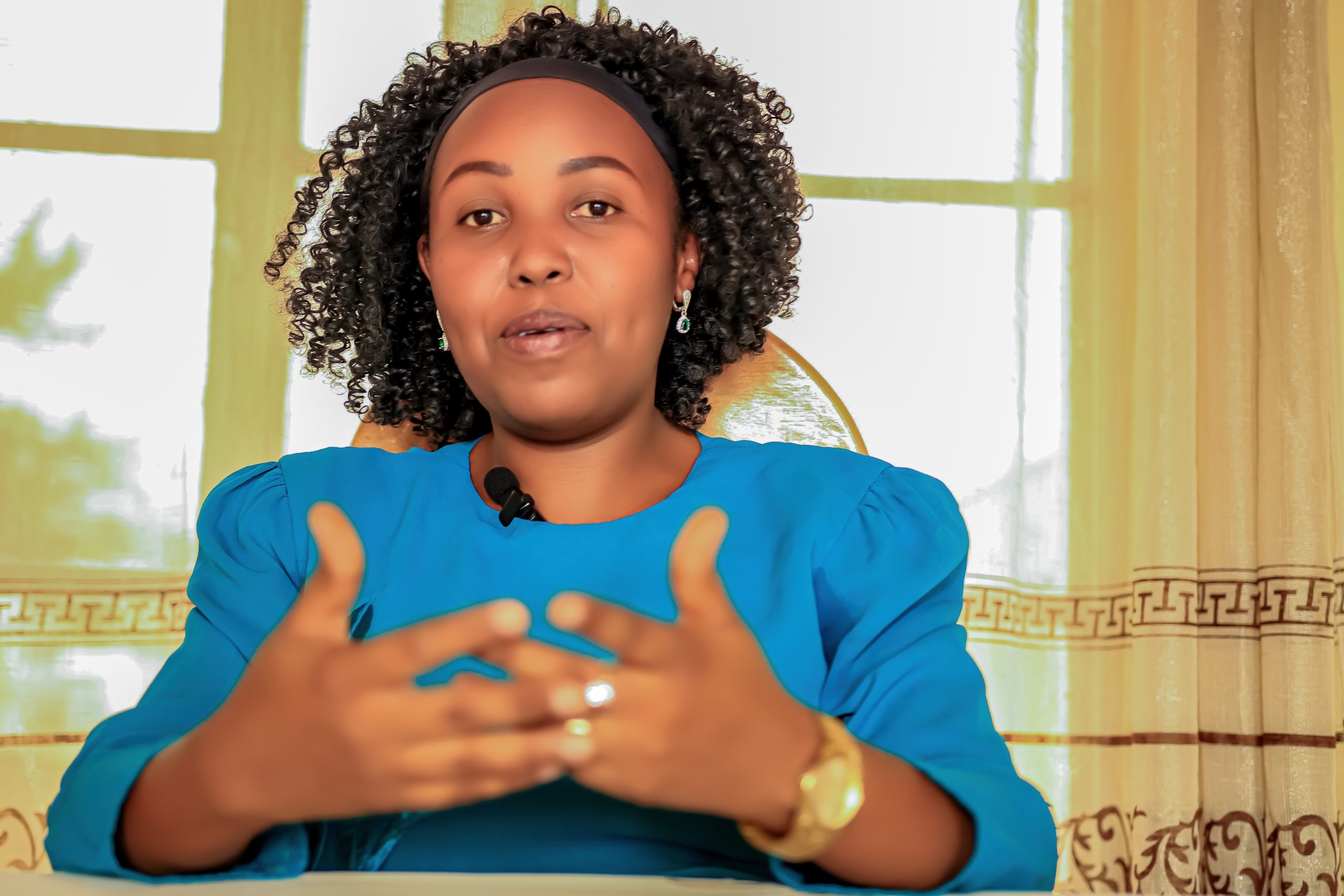
Climate change amplifies land conflicts
Land conflicts are not new; they have long been resolved by the Bashingantahe, the courts and tribunals, and communal administrators, even though this is not within their purview. Thus, the landslide in Gabaniro-Kirasa village not only resulted in material and human losses, but also triggered a complex land crisis that threatens the social stability of the locality.
Indeed, Gabaniro-Kirasa is a village of the Gitaza zone, Muhuta commune in Rumonge province, which was severely affected by the El Niño phenomenon. Heavy torrential rains triggered a landslide, forcing approximately 500 households to flee the area. This incident caused significant material damage and left one person dead. Approximately 2,500 people were left homeless, and 500 hectares of cultivated land were damaged.
Bienvenu Ntakirutimana, one of the victims, describes the onset and unfolding of events. “It was during the day that the first warning signs began to appear. The area near the hydroelectric power plant began to crack, signaling imminent danger. Local authorities then alerted the Red Cross and the National Platform for Risk Prevention and Disaster Management. Upon their arrival, they confirmed the threat and urged local residents to leave before the situation worsened. Around 6 p.m., as people were returning from work, the disaster took us by surprise. People started screaming and fleeing when the mountain began to slide,” he says.
Following this slide, land properties became so intertwined to the extent that it became difficult, if not impossible, to distinguish amid them. Before the disaster, these lands were mainly occupied by banana and oil palm plantations, in addition to homes and food crops such as corn, beans, cassava, to name but a few.
About a year after the disaster, only the banana and oil palm trees remain visible, but they are no longer in their original locations due to ground movement. Faced with the danger, the government declared the area uninhabitable. However, the former occupants resist this ban and continue to try to cultivate there despite the risks involved.
The situation has led to land conflicts exacerbated by land displacement. Former owners cannot agree on the new boundaries of their land or the distribution of displaced banana and oil palm trees. For example, when a landowner owned seven oil palm or banana trees that had moved onto a neighbor’s property, they claimed them, but their neighbor refused, indicating that their own trees had also moved onto other plots.
Another major problem concerns the declaration of land areas. Some former owners, whose plots originally measured 4 acres, now claim they owned 16 acres, 18 acres, or even more. These exaggerated claims further complicate the situation and fuel tensions amid residents.
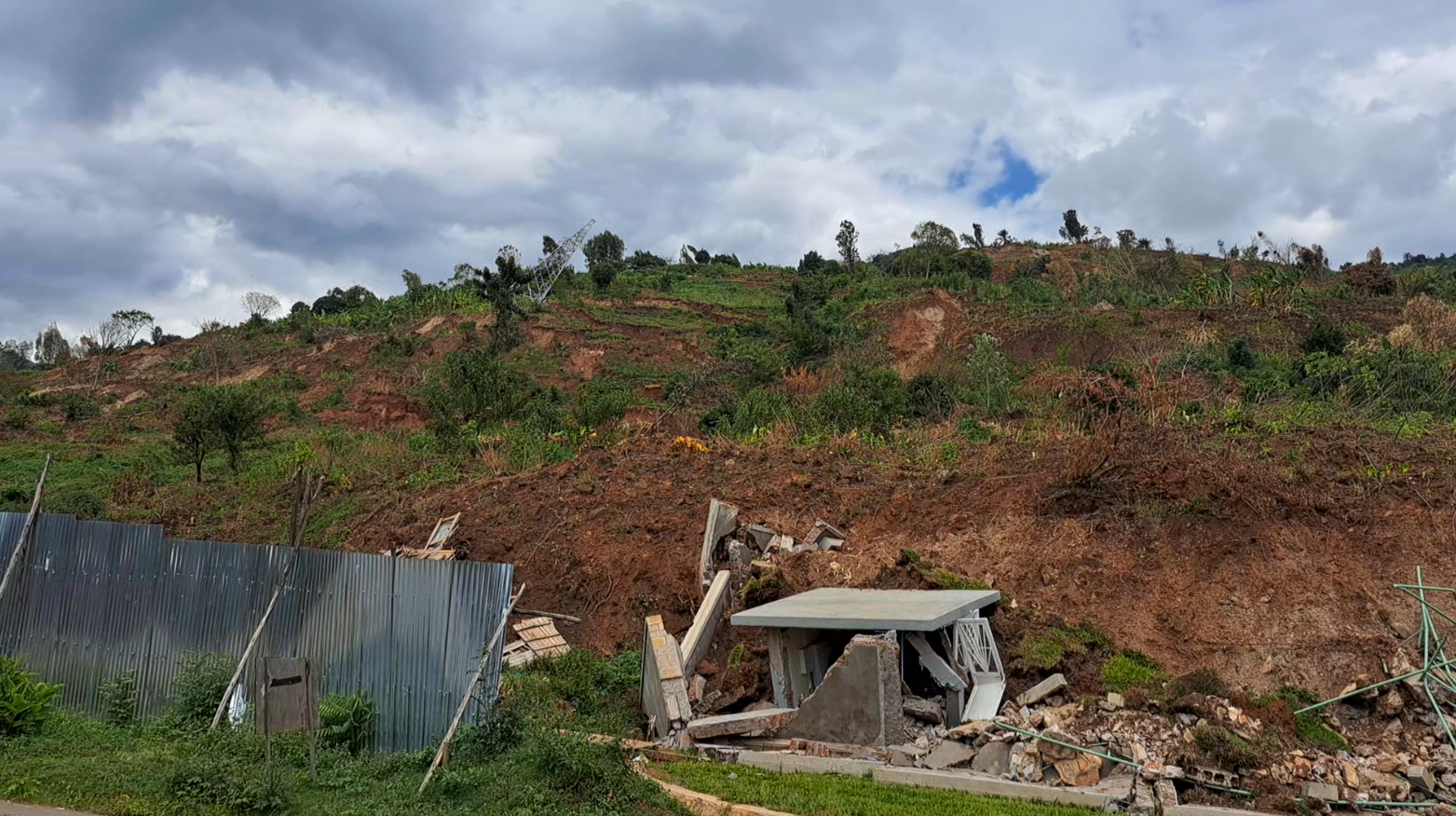
The local administration asks the former occupants to respect the measures taken by the government, which has declared this area uninhabitable. “Given potential land conflicts, but also the fragility of the mountain, which is already vulnerable to landslides, the government has declared this area uninhabitable. Thus, the victims are required to scrupulously respect these measures while waiting to be relocated to a safer location,” Jules Nibogora, a local administrative official emphasizes.
Lives turned upside down: Victims’ testimonies
Pierre Ndikumasabo and his wife Yvette Nsabimana lost their 5-year and two-month old son by the name of Samuel Niyomwungere, following the landslide at Gabaniro-Kirasa, Gitaza zone in Muhuta commune. Ndikumasabo describes with deep emotion the circumstances of his son’s sudden and brutal disappearance: “Around 6 p.m., people began to flee, warned of imminent danger. The meal was ready, and we gathered all the children to eat before leaving. Everyone sat down at the table, except Niyomwungere, who refused and said: ‘I’m not going to eat. Sorry, I have no appetite, I’ll eat tomorrow.’ After the meal, we began to take out household items, kitchen utensils, and other belongings to escape. Meanwhile, Niyomwungere had discreetly lain down to sleep, without our knowledge,” he said.
According to Ndikumasabo, they left, convinced that their seven children were all with them. Once they reached National Road No. 3 (RN3), they put down their belongings to catch their breath. Suddenly, crackling and shaking began to sound, causing a general stampede. “While taking stock, I suddenly noticed that a child was missing. It was Samuel Niyomwungere. Panicked, we looked for explanations; put forward several theories, but in vain. At midnight, we learned that the communal administrator, who was present at the time of the tragedy, had allegedly evacuated several children to the Gitaza commune’s headquarters to protect them. With no news of Niyomwungere, our anxiety grew,” he says. Early the next morning, Ndikumasabo went to Gitaza, hoping to find his son among the rescued children. But upon arriving, he had to face the facts: “Niyomwungere wasn’t there. I returned to Gabaniro, desperate.”
Ndikumasabo explains that around 10 a.m., their eldest son returned to the scene of the tragedy to retrieve his forgotten passport. “While searching through the rubble of our adobe brick house, he made a tragic discovery: instead of his passport, he found the lifeless body of his little brother, crushed under the rubble. In shock, he let out a cry of alarm before bursting into tears. Horrified, we rushed there and discovered the inert body of Samuel Niyomwungere,” Ndikumasabo reveals.
“I have lived through, and am still experiencing the most difficult moments. Niyomwungere’s sudden and brutal disappearance left indelible marks and deep trauma on me. The same is true for his younger and older brothers. Since this tragedy, I have no longer been able to sleep peacefully. Nightmares have become my intimate companions, and depression is increasingly becoming a part of my daily life,” laments Yvette Nsabimana, the mother of the deceased. She acknowledges that she has been a victim of climate change, but not to the same extent as others. “I know better than anyone the devastating consequences of climate change. My neighbors lost their material possessions, but I lost everything: my material possessions and the fruit of my loins. The wound is still too fresh to forget this event, and it will take time for me to heal,” she laments.
“He was the one who used to announce the sunrise to me.” Every morning, he would knock on my door and say, “Bibi” (a Swahili word meaning grandmother), “get up, the sun is rising. I experience this absence as a sacred ordeal, a suffering I carry every day,” Béatrice Bansekako, the grandmother of the deceased, says wearily.
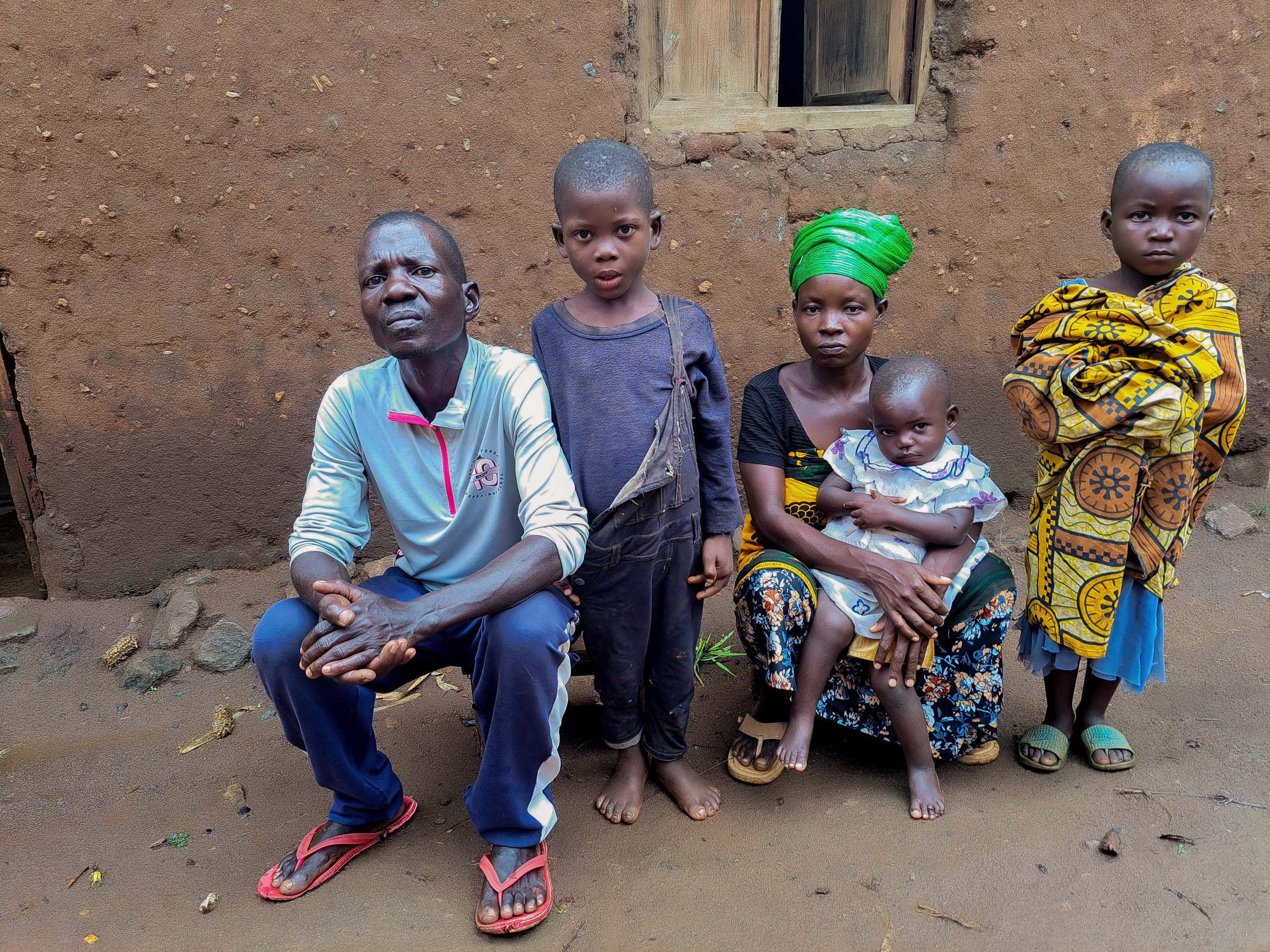
Jean de Dieu Nkeshimana lives in Nkenga Busoro, a locality hit by massive landslides that engulfed approximately 230 households. His house was completely swept away, leaving his family in despair. With his wife and children, he is trying to survive in the ruins of their home, seeking to rehabilitate what remains. This family is facing extremely difficult living conditions. He explains that they are literally living under the rubble, which underscores the urgency and gravity of the situation. The loss of their home represents not only a physical challenge, but also an emotional and psychological one for the family.
Nkeshimana lacks a stable job and relies primarily on informal activities to meet his daily needs. He works as a sand and gravel digger in the Kanyosha River, an often precarious and poorly paid job. His wife, meanwhile, sells avocados on the streets, a business also vulnerable to market fluctuations or economic uncertainties. Their income is insufficient to cover essential monthly needs such as food, children’s education, and medical care.
He expresses his concern about rebuilding their house. He emphasizes that their income is insufficient to meet their basic needs. “Our resources cannot meet our needs,” he worries. The distress expressed by Jean de Dieu Nkeshimana is palpable. He wonders where he will find the means, especially financial ones, for reconstruction after the natural disasters. “I wonder where I will find the means to rebuild my house,” he alarms.

Vella Harerimana is a 70-year-old mother met at the Gisagara site, which houses those displaced by the devastating Gatumba floods. Before the floods, she lived in Gatumba, in the Mushasha neighborhood. She emotionally describes the unfolding events that left a multitude of people in utter devastation. She says the events have occurred three times in less than a year, but the last one was the deadliest of all. “The first time, Lake Tanganyika surprised us at midnight by flooding our homes. Had it not been for the intervention of the Civil Protection police, the Red Cross, and local authorities, we would all have been engulfed,” she says.
She explains that they were forced to move into the classrooms of a nearby school that was not affected by the floods. “After a while, we returned to our respective homes, but there too, the floods didn’t let up. In less than a year, they came with greater ferocity,” she deplores. She explains that the administration, the Red Cross, and the civil protection police decided to relocate them to Maramvya, to a site called SOBEL, set up for this purpose. “So, we were forced to leave our homes and desperately settle in tents,” she says.
According to Harerimana, after a few months at the SOBEL site, they decided once again to return to their native village. The administration, assisted by humanitarian organizations, decided to rent houses for them. “They rented houses for us, but the humanitarian action only lasted as long as the dew. Rents increased dramatically, and the amount intended to cover the rent became insufficient,” she emphasizes. Thus, they decided to return to live in the ruins of their homes. The torrential rains, unleashed by El Niño, continued to strike with arduous violence.
In terms of losses, she deplores the fact that during all these tragic events, she lost all her possessions. Her six goats, the kitchen utensils, and other household items in her house were all submerged. Her house, too, is no more. She now lives in the Gisagara site, in total desolation, devoid of all her possessions. “We live in precarious conditions, exposed to diverse weather conditions, the blazing sun, and the cold. Before, I would never have imagined that one day I would be in such conditions, sleeping in tents in alternating heat and cold, without any possessions,” she laments. She points out that her deceased husband left her a beautiful house, but it was completely submerged and engulfed by the waters of Lake Tanganyika. “I had a beautiful house that my husband left me, but unfortunately, I am now at the mercy of crocodiles and hippos,” she laments.
She is, however, delighted to have narrowly escaped the floods but indicates that she is not at all satisfied with the life she is experiencing as a climate-displaced person. “I am no longer threatened by the waters of Lake Tanganyika, and that is a relief. But the conditions we live in here are precarious,” she deplores. She says that lightning strikes regularly in that locality, causing deaths and leaving families in mourning. Nkeshimana reveals that she has lost considerable weight due to the stress and difficult living conditions she faces. She asks that the displaced living in that site be resettled in another more or less comfortable place.
The Gateri site is located approximately 300 meters from the Rusizi River, which borders the Democratic Republic of Congo. It is built on stony ground and is 5 km from the headquarters of Buganda commune in Cibitoke province.
Suavis Ndikumwenayo is another woman encountered at the same site. She is a widow with six children. Before the floods, she lived in the Gatumba zone of the Mushasha 1 neighborhood. Her husband was devoured by a crocodile. With a tone of sorrow, Ndikumwenayo describes the sequence of events and the circumstances of her husband’s death. “It was around 2 a.m. when the waters of Lake Tanganyika invaded us. My husband managed to save our lives, me and my six children,” she says.
After saving his family’s lives, the husband returned to the neighborhood to try to rescue some goods left in the house. Unfortunately, he lost his life. “The next day, after saving us, my husband returned to the neighborhood to try to recover the belongings that were left in our house. He was devoured by a crocodile that cut him in two,” she laments.
She says her life has been completely turned upside down and that she was traumatized by the floods. She says she is overwhelmed by memories of the floods: “Sometimes, in broad daylight, memories of what I experienced come back to me repeatedly. My nights are sometimes characterized by nightmares following these painful and traumatic events,” she says.
Ndikumwenayo says that sometimes, when it rains at night, the children worry that the tents might collapse, causing them to scream in fear. Faced with this anxiety, Ndikumwenayo even considers the possibility of demons and calls on people to help her pray. She emphasizes that rainy nights thus become a time of tension and uncertainty for families living in tents. However, she believes that the fear of collapse and of invisible forces amplifies the stress already present in their daily lives.
Sophie Niyonkuru, one of the victims of the Gatumba floods, advocates for an increase in the number of medical staff in the camps. She emphasizes that the site is densely populated and the medical staff assigned there are only present during the day. This situation poses a serious problem, as outside of working hours, there is no one to care for the sick or emergencies. She explains that if someone falls ill during the night or if a woman about to give birth needs help, they are forced to go outside the camp, which places a considerable burden on them. She therefore calls for sufficient medical staff in the camp to ensure nighttime coverage.
Furthermore, Niyonkuru highlights a specific difficulty that women encounter: lack of access to sanitary protection due to the precarious financial situation caused by the El Niño phenomenon, which devastated all their possessions. This situation exposes many women to infections and other diseases linked to poor menstrual hygiene.
Faced with these challenges, she calls for awareness and measures aimed at improving health conditions and access to healthcare for flood-affected populations.
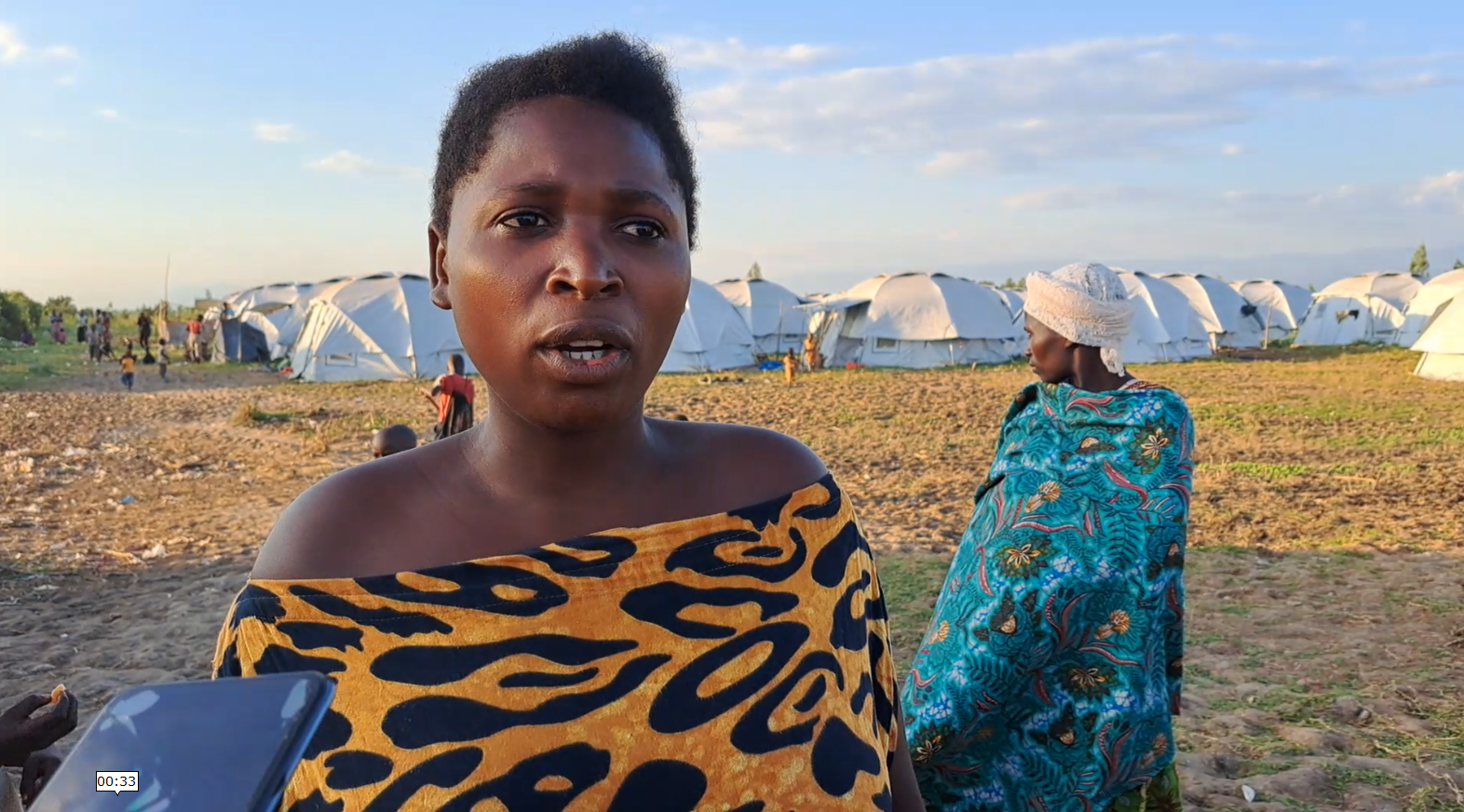
When promiscuity destroys intimacy and puts couples to the trial
Many men affected by flooding and landslides met in the various camps housing climate-affected people express frustration and concern about the decline in making love, often attributed to the precarious living conditions in tents with their children. These confined environments not only limit their intimacy, but also create an atmosphere where sexual needs are difficult to be met. Cohabitation with children in a confined space generates concerns that are detrimental to their sexual life.
“The floods deprived us of everything, including the possibility of making love. The precarious conditions imposed by these floods have made us victims of this situation,” says Hussein Sibomana, a victim of the Gatumba floods met at the Kinyinya site.
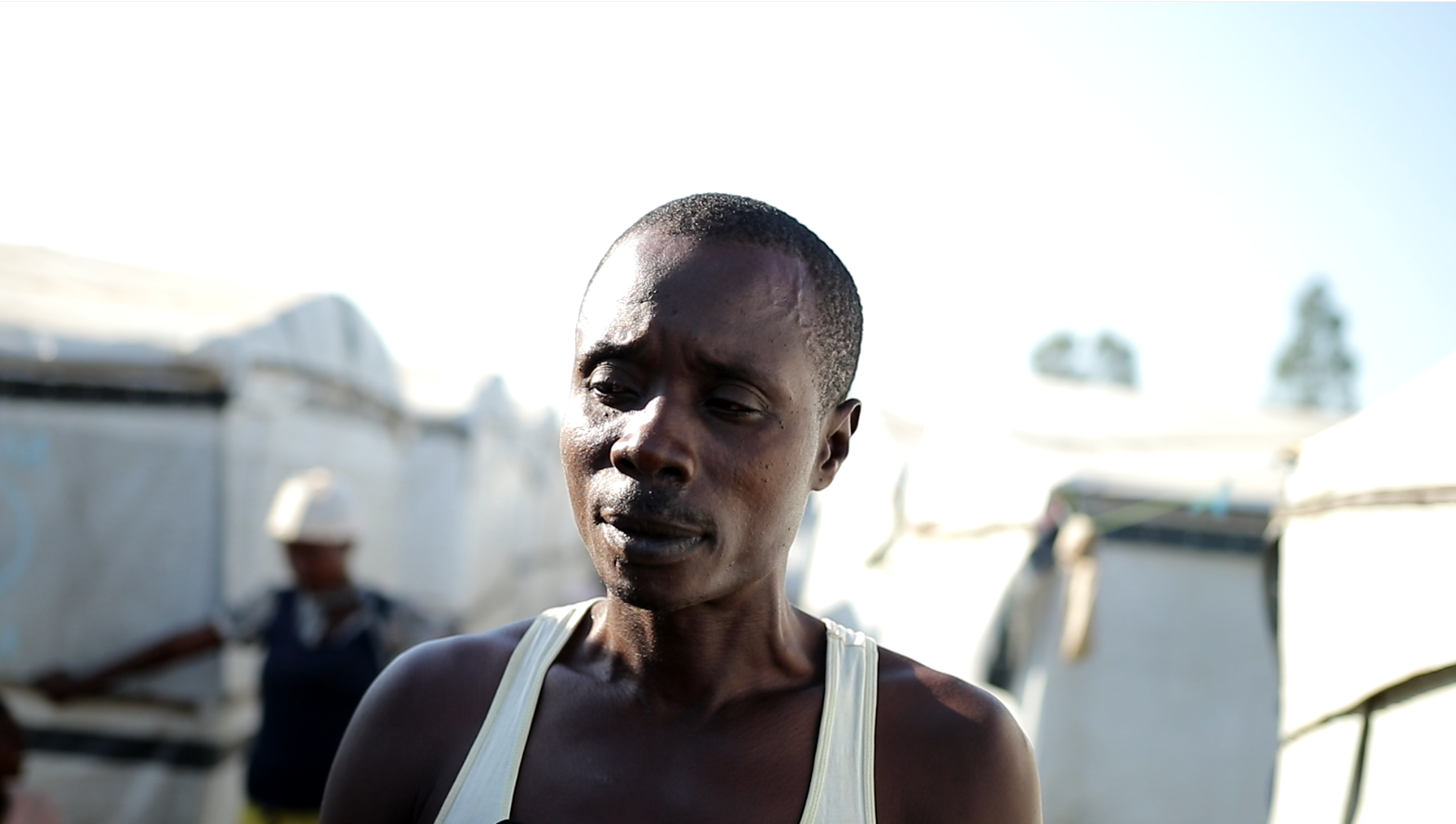
He emphasizes that living in a tent greatly complicates intimate life. The spaces are cramped, sometimes even stifling, leaving little or no room for intimacy. According to him, with children sleeping nearby, it’s impossible to isolate themselves. Some end up abandoning any sex-oriented idea following the lack of solutions. Sibomana also points out that overcrowding, noise, and a lack of privacy turn married life into a real headache.
“It’s important to understand that these events are factors that contribute to a decrease in sexual needs. Among the symptoms of stress or mental illnesses linked to these stressors, that is, traumatic events, is a decrease in their desire for sex. For others, given the conditions in which they live, the need may diminish because even if this need is there, they are unable to satisfy it,” says Dr. Godelive Nimubona, a psychiatrist at the CNPK.
According to her, this situation has a negative impact on individual well-being. Indeed, sexual relations are essential elements of individual well-being and play a key role in strengthening the family. “So, there is an essential element of well-being that is not met, which can make individuals more fragile. If this lack manifests itself in other missing elements, this constitutes an additional factor likely to lead to disruption,” she insists.
The women did not express their standpoint on this issue, which could be attributed to the fact that, in Burundian culture, women do not discuss sexuality. Indeed, in Burundi and in many African societies, sexuality is often considered a taboo subject. From a younger age, girls are generally up brought not to discuss their sexual desires or experiences. The situation of women in Burundi, particularly with regard to their expression on topics related to sexuality, is deeply rooted in the country’s cultural and social norms. In Burundi, community traditions and values play a key role in daily life. There is often a stigma associated with openly discussing sexuality, especially for women.
The situation experienced by these climate change victims illustrates the challenges faced by thousands of others in similar situations after natural disasters. Their daily struggles to survive while trying to imagine a better future are a heartbreaking call for solidarity and support.
Port flooded, beaches wiped out: Lake Tanganyika has suffered the wrath of El Niño
Lake Tanganyika has surpassed the 776 m mark, while it had a height of no more than 775 m just a few years ago. According to experts, this rise is nothing new. Lake Tanganyika often overflows its shores, to the detriment of riparians who pay the price. In 1963-1964, it overflowed its shores, but there was less damage because few people lived on its shores.
The rising waters of Lake Tanganyika have also profoundly affected investors who have built beaches on its shores. Caravan Beach is one of the bars built on the lake’s beaches that have been hardest hit. Philippe Hakizimana, the manager of the bar, claims that the floods have washed away more than 80% of the total area. Straw huts and recreational areas, including a beach soccer pitch, were all submerged.

The staff has been significantly reduced. “Before, we had 20 full-time employees, but now we’re down to six. Even though the calculations to assess the losses haven’t been done yet, they are enormous,” he says, estimating the losses at 80%. “Before the floods, and especially on weekends, we could set up 60 tables, but currently, we only use four, and not all of them are occupied,” he reveals.
Hakizimana believes the situation represents a considerable loss, not only for the country, but also for many families. “Here, young people had jobs, but following these floods, they automatically lost them,” he emphasizes.
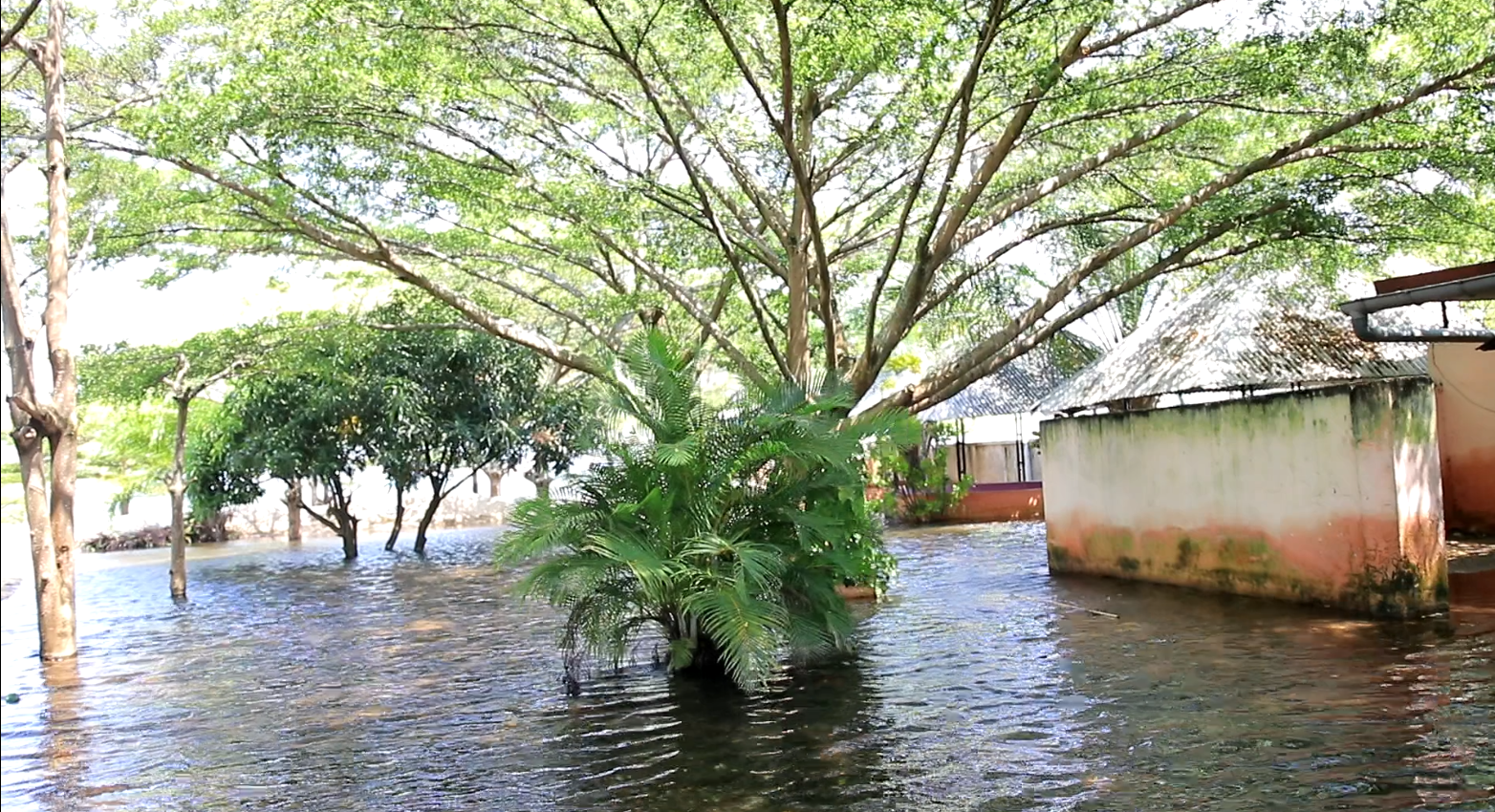
The port of Bujumbura, a strategic hub for regional trade, is among the sites hardest hit by the consequences of El Niño. The devastating effects of rising waters in Lake Tanganyika have severely disrupted cargo loading and unloading operations. Port officials describe the extent of the damage, stating that several warehouses, including H7, H8, and H6, were flooded.
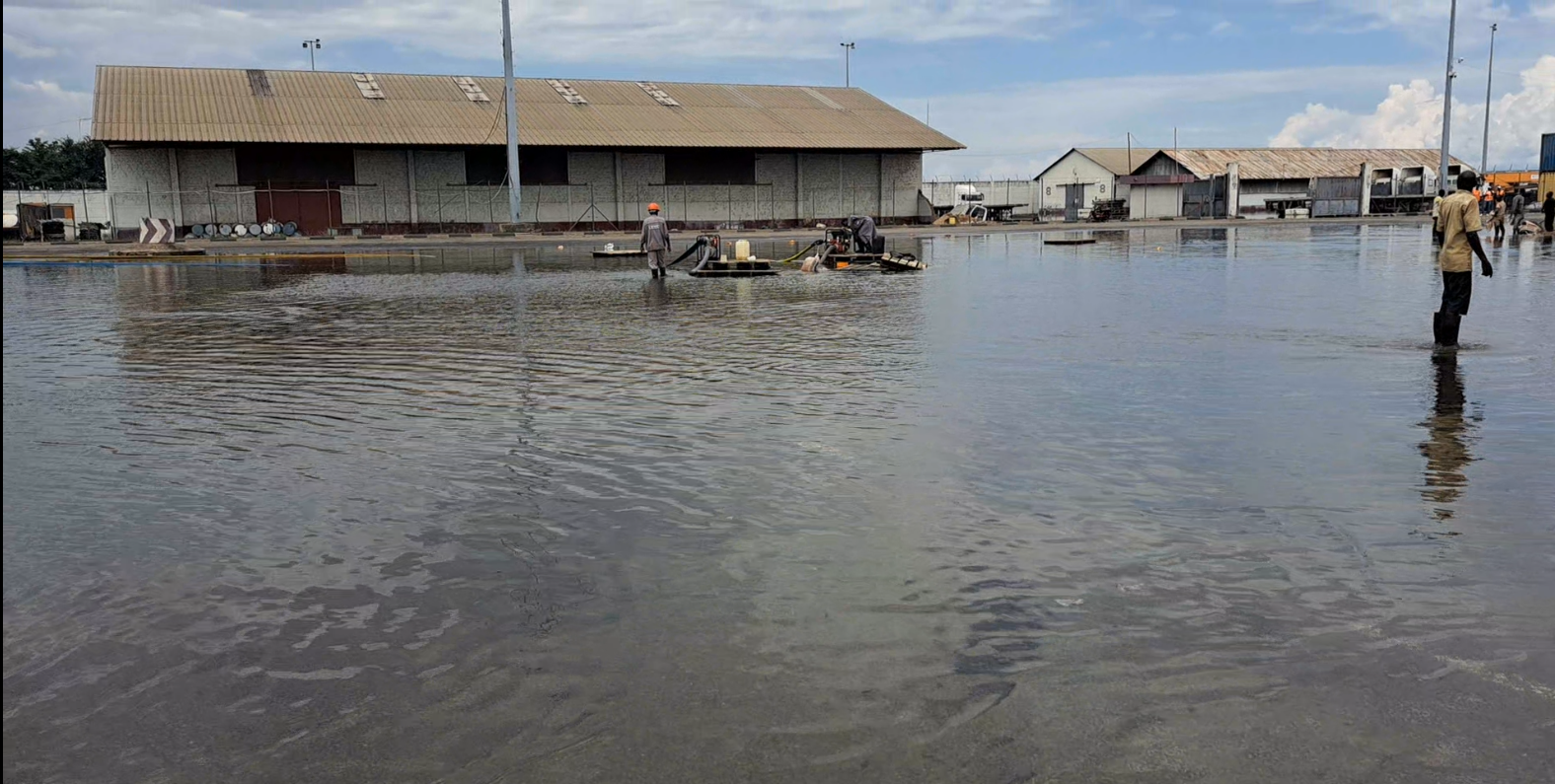
Vital infrastructure along Lake Tanganyika, from Gatumba to Kabonga, has been profoundly affected by extreme weather events linked to El Niño. Flooding and landslides resulting from these weather conditions have caused extensive damage to roads, bridges, infrastructure, and other facilities vital to transportation and resource supply.

Sustainable Solutions to Mitigate Climate Risks in Burundi: Expert Recommendations
Rénilde Ndayishimiye, Director of Environment and Climate Change at the Burundi Environmental Protection Authority (OBPE), indicates that addressing the environment and climate change requires personal, family, and administrative commitment at all levels, from the village to the provincial level, and up to the national level. She emphasizes that Burundi has a policy and strategy for climate resilience and adaptation, and that the will to implement them is evident. However, she underscores, change must also involve a transformation of individual and collective behaviors.
Ndayishimiye also discusses the major challenges Burundi faces in mitigating climate change. “The first challenge is the lack of sufficient funding, which limits the country’s capacity for action. The second challenge lies in the need for increased awareness to induce behavioral change among the people,” she says. She emphasizes that climate change is primarily caused by developed countries, but the lack of adaptive measures at the national level increases Burundi’s vulnerability.
According to her, excessive tree felling for firewood and agriculture leads to increased soil erosion. It is therefore crucial to combat deforestation, but also erosion and land degradation. She believes that having reliable rainfall forecasts is essential because their irregularity causes floods and droughts, thus threatening food security.
Furthermore, biodiversity loss is a worrying reality, often borne helplessly by the people, but sometimes also caused by human activities. Ndayishimiye indicates that it is crucial to strengthen forest rehabilitation policies and protect existing forests, particularly protected areas. “Without them, the incidence of disease is likely to increase. Forests play an essential role in purifying the air and maintaining a healthy environment,” says Ndayishimiye.
She explains that it is also essential to promote sustainable agricultural practices, including agroforestry and composting, to improve soil fertility while limiting the use of chemical fertilizers”. She emphasizes the need to develop climate-resilient infrastructure. She also recommends investing in renewable energy sources such as solar energy, biogas, and hydroelectricity.
Awareness-raising at the community level is equally essential. “People must be encouraged to adopt ecological practices, reforestation, efficient water management, and the rational use of natural resources. Training on climate-adapted agricultural methods, environmental solidarity, and family gardens should be organized,” she underscores.
At the individual level, Ndayishimiye continues to say, everyone can take action by growing trees and reducing wood use through alternatives such as biogas, solar energy, or improved stoves. She also encourages the adoption of sustainable agricultural practices. She believes that a real change in behavior is necessary at the individual, family, community, and village levels. According to her, local action is essential to mitigate the effects of climate change and ensure a more sustainable future.
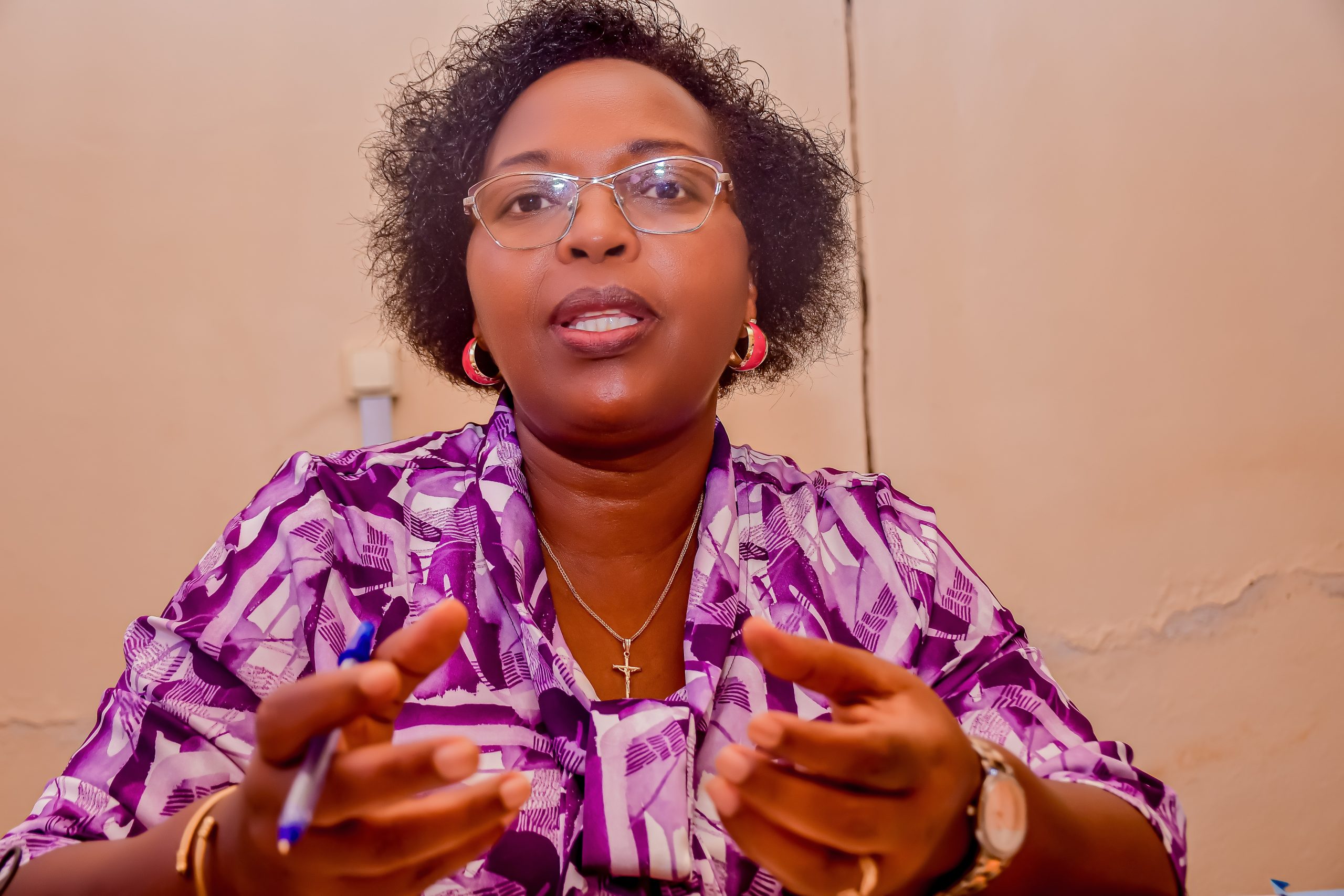
Dr. Athanase Nkunzimana and Tharcisse Ndayizeye, as environmental experts, alternately propose possible solutions and measures that stakeholders could adopt to mitigate the adverse effects of climate change and promote adaptation.
Dr. Nkunzimana reveals the preventive measures that should be adopted to limit or prevent the expansion of flooding in Lake Tanganyika. He indicates that it is necessary to review the standards of the Water Code to assess whether the current provisions are still being respected. “It is possible that the 150-meter limit is no longer sufficient or respected. A better approach would be to delineate the no man’s land (buffer zone) based on altitude, for instance, by setting this limit at 780 or 785 meters. It then becomes imperative to review the delimitation of the flood zone and relocate the people living in the affected areas. “The residents of the most affected areas, particularly Kibenga Lac and Gatumba, should be relocated to secure areas in order to maintain these regions as no man’s lands,” he suggests.
He also believes that the regulations limiting this no man’s land should be redefined, taking into account elevation rather than distance in meters, as 150 meters can still be considered a flood zone. Regarding infrastructure located along the lakeshore, he believes it should be built according to international standards to withstand flooding. However, he adds, Burundi lacks financial resources for such construction, so it would be more appropriate to completely free up the no man’s land.
The 2012 Water Code prohibits construction within 150 meters of the shore of Lake Tanganyika, considering the highest level the lake’s waters have reached during their periodic floods. For the country’s other lakes (northern lakes), the limit is 50 meters, or 25 meters on each of the shores of Lake Tanganyika’s tributaries and 5 meters from the country’s other rivers.
Regarding landslides, particularly in the Mirwa region, it is essential to review development strategies. He recommends covering hills with vegetation to accelerate rainwater infiltration, as landslides and rockfalls generally occur after heavy rainfall. Furthermore, agricultural developments must comply with environmental standards. “We also need to reconsider construction methods, as many houses are perched on steep slopes, in marginal and unbuildable areas. The lack of appropriate drainage systems amplifies runoff, thus promoting the formation of gullies that trigger landslides,” he recommends.
Deforestation of the hills is another aggravating factor. “During heavy rains, the rivers flowing through Bujumbura turn into torrents, carrying debris such as stones, tree trunks, and sediment, obstructing waterways and exacerbating flooding, as observed on the Kanyosha River. It is therefore essential to scrupulously respect no man’s lands around rivers and avoid their excessive exploitation, as this further weakens these rugged regions. In the past, the presence of gallery forests around rivers helped limit the flow of debris and stabilize the soil. However, today, these areas are used for agriculture and housing, increasing runoff and reducing rainwater infiltration. It is therefore urgent to increase the infiltration coefficient by increasing vegetation in the Mirwa hills,” he says.
Finally, Dr. Nkunzimana emphasizes that the dissemination of environmentally friendly agricultural techniques, including the growing of trees compatible with agriculture, is essential to stabilize soils and reduce the risk of landslides and rockfalls.
To strengthen people’s resilience to the challenges caused by the rising waters of Lake Tanganyika, the expert believes it is essential to adopt a logical approach. “When seeking protection against flooding, the first instinct should be evacuation: leaving flood-prone and at-risk areas. Then, it is crucial to explore alternative livelihoods and adapt to a new environment,” he discloses.
Furthermore, he emphasizes the importance of understanding that these floods are not an isolated phenomenon. “Even if the waters recede temporarily, studies show that further episodes of rising waters will occur. Therefore, the affected people must recognize that nothing is worth living and that it is preferable to settle elsewhere, rather than remain in an area increasingly exposed to flooding,” he underlines.
Dr. Nkunzimana conveys a message to Burundian policymakers and to the national and international communities regarding hydrometeorological risk management. “Faced with hydrometeorological risks, it is essential that the government take effective measures and seek international support in the event of a disaster to support affected people. The State must strengthen prevention and citizen protection, as was done for the victims of Gatumba and Gabaniro. Local solidarity is also crucial to assist the victims. Finally, it is essential to adopt a risk culture by seeking information before any construction or land use in order to minimize the impacts of natural disasters,” he says.
In Gatumba, some people display resistance and refuse to leave the rubble of their homes devastated by flooding. They preferred to stay nearby rather than be housed in assembly camps like other disaster victims. Psychiatrist Godelive Nimubona does not confirm that this behavior is linked to mental health issues, but does comment and offer her opinion on this case.
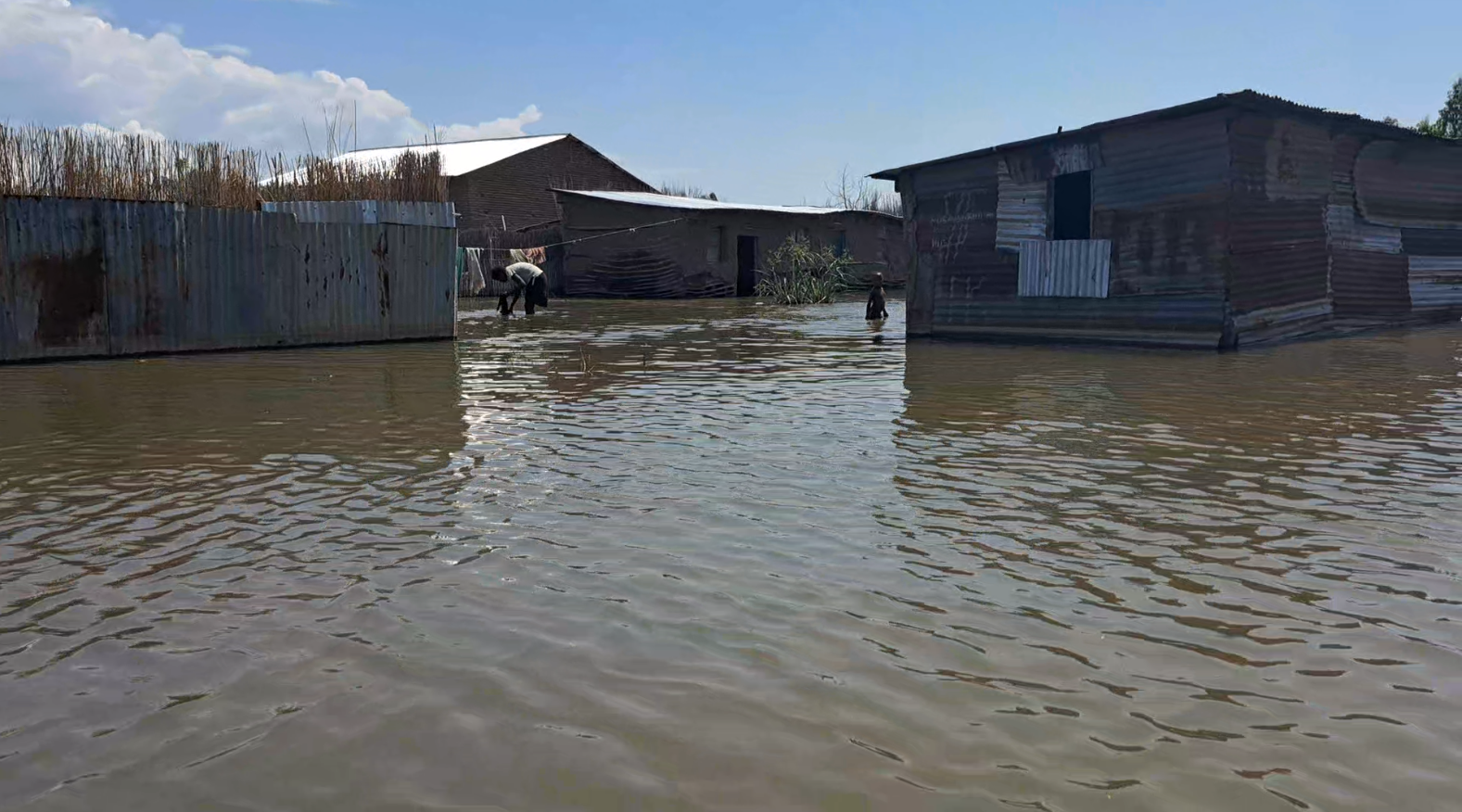
“To answer this question, I would say that these people are afraid of facing life’s difficulties. Perhaps they fear that if they leave this place, they will no longer be able to live as before. However, they also don’t realize the danger of staying there. These people find it difficult to move out of fear of the obstacles associated with this change,” she says. According to Nimubona, this is a problem because by staying in such a place, they expose themselves to numerous problems. She believes it is essential to act upstream by preparing these people in advance and helping them relocate before the situation becomes critical.
Tharcisse Ndayizeye, for his part, emphasizes the importance of implementing activities not only on the rivers that flow into Lake Tanganyika, but also on Lake Tanganyika itself. Furthermore, he places particular emphasis on the Rukuga River, the outlet of Lake Tanganyika. According to him, it is essential to concentrate efforts on this river to better regulate the flow of the lake’s waters and avoid the flooding risk.
“First, it would be appropriate to build dams on the main rivers: the Rusizi, the Maragarazi, the Ifume, the Runangwa, and the Ruvubu, with the aim of regulating the amount of water flowing into Lake Tanganyika. The second proposal is to carry out dredging operations to remove the sediment that flows in daily. The mountains that were once covered with vegetation are now invaded by fields and homes. Thus, during each rainfall, all the earth from these mountains ends up in Lake Tanganyika,” he explains.
According to him, Lake Tanganyika is increasingly laden with mud and sediment. Even if the water volume remains the same, the accumulation of sediment eventually causes overflows. He emphasizes the need for regular dredging operations to remove the accumulating sediment, but remains convinced that these operations require considerable investment. However, he believes this activity remains essential to prevent a recurrence of the situation.
Ndayizeye also emphasizes the importance of conducting a regional study to identify flood-prone and high-risk areas. “It is crucial to prevent construction in these areas, as it poses considerable risks. Investing in such areas means accepting the potential loss of that investment in the event of flooding,” he warns.
The environmental expert highlights the threats posed by the rivers that flow through the city of Bujumbura, such as the Ntahangwa, Kanyosha, Muha, and Nyabagere, to the population and the need to protect them from toxic waste, which, in turn, poses a threat to Lake Tanganyika. “These small rivers can pose a threat by carrying toxic waste that pollutes Lake Tanganyika, thus endangering its flora and fauna. This lake is renowned for its exceptional biodiversity”. Research continues, and it has been discovered that it is home to around 1,500 species of fish,” he reveals.
Given Burundi’s vast forests that sequester CO2, researcher Ndayizeye suggested that the government demand the implementation of the polluter-pays principle so that countries responsible for greenhouse gas emissions reward Burundi. He also proposed the establishment of a National Climate Change Response Fund.
According to the International Union for Conservation of Nature (IUCN), Burundi’s legally recognized (or at least in the process of being recognized) protected areas cover approximately 1,040 km2, or 3.7% of the country’s total area. Burundi is one of the few African countries where no national parks were established during the colonial era, although all forests became official reserves under Belgian colonial rule in 1933. It was only with the decree-law of March 3, 1980, establishing national parks and nature reserves that legislation relating to protected areas was put in place. In addition, the 1985 Forest Code provided for the creation of protected forests, forest reserves and reforestation zones. (Sournia G, 1998).
With this reforested area, Burundi is able to sequester several tonnes of CO2, which could be an economic benefit in the form of financing in exchange for carbon credits. These funds could be used to support its projects and programmes aimed at combating the negative effects of climate change.
However, Dr. Cleto Ndikumagenge, forestry, biodiversity, and climate change expert, emphasizes that Burundi’s forest cover is minimal compared to other countries; hence his recommendation for forest rehabilitation. “We have a country with very minimal forest cover compared to other countries. We have less than 10%, while other neighboring countries, such as the Democratic Republic of Congo (DRC), Cameroon, and others in Central Africa have forest cover ranging between 30 and 40%,” he deplores.
The expert emphasizes that forest rehabilitation in Burundi faces many challenges. The first is demographic pressure which complicates sustainable forest management. The second challenge is dependence on external financing: for example, $3.2 billion is needed for the nationally determined contribution, a large part of which comes from foreign funds. Finally, the third equally important challenge concerns the availability of quality forest seeds, essential for ensuring effective reforestation.
Climate Change and Government Responses: Analysis of Current Programmes
Burundi emits less than 0.02% of the greenhouse gases (GHGs) that contribute to global warming. However, it is ranked among the 20 countries in the world most vulnerable to the adverse effects of climate change. The devastating floods and landslides caused by the El Niño phenomenon are testament to this. Despite this tragic situation, Burundi is not sitting still. It is doing all the best to combat the devastating effects caused by weather variations through mitigation, adaptation, and resilience. The role played by non-governmental organizations in climate action is essential.
Burundi’s friendly countries and development partners, as well as humanitarian organizations, played a vital role during the floods and landslides caused by the El Niño phenomenon. Their intervention helped support affected communities by providing emergency aid. It is essential that these partners continue to support Burundi in its efforts to strengthen the resilience of vulnerable populations to natural disasters. Furthermore, their support is essential to help the country implement strategies to mitigate and adapt to the adverse effects of climate change.
To assist and support those affected by the climate crisis, the World Bank has pledged US$80 million. The European Union (EU), for its part, has already released US$31 million for the implementation of water protection projects in Lake Tanganyika and Lake Kivu. The United States Embassy to Burundi has also announced that it will contribute US$1 million to mitigate the effects of the crisis. China has also pledged US$1 million. All of these pledges were made during the flooding period. Burundi has implemented several strategic programmes that include effective policies for environmental protection and combating the adverse effects of weather variations. The national programme “Ewe Burundi Urambaye” was set up in 2018 by the government of Burundi to fight the climate change through reforestation.
Another key element is the National Development Plan (PND), which integrates environmental objectives into the country’s socioeconomic development. The PND emphasizes the importance of sustainable natural resource management and encourages investment in green infrastructure. The overall objective of the PND is to “structurally transform the Burundian economy for strong, sustainable, resilient, and inclusive growth that creates decent jobs for all and improves social welfare.” To transform the structure of the economy, the PND relies on increasing energy production: the construction, rehabilitation, and/or expansion of energy infrastructure are prerequisites for the sustainable structural transformation of the Burundian economy. Controlling energy production and reducing its cost are factors that foster the development of processing and service activities. Access to affordable and reliable energy is the most important priority for private sector development.
Faced with climate change, Burundi will need to develop mechanisms to mitigate and adapt to climate risks and improve its resilience to ecological challenges. The implementation of climate change policies and actions will result in an improvement in the amount of greenhouse gases sequestered from 14,630.5128 Gg in 2022 to 14,851.2912 Gg of CO2 equivalents in 2027 and the reforestation/deforestation ratio from 2.69 in 2022 to 2.81 in 2027.
Furthermore, the Vision Burundi 2040-2060 (emerging country by 2040 and developed country in 2060) is a national policy document and roadmap for Burundi’s economic and social development, which will serve current and future generations. It is a long-term roadmap for sustainable development, emphasizing the need to adapt public policies to future environmental challenges. The vision includes strategies to strengthen climate resilience, protect biodiversity, and promote the responsible use of natural resources, as its Goal 19 states: “Protect the environment and strengthen resilience to climate change.”
Managing resilience mechanisms to address new threats facing the planet is a major challenge, as climate-related disasters create protection problems for the most vulnerable. Therefore, it is important to establish mechanisms to coordinate the initiatives of various stakeholders working to strengthen resilience to climate change and protect the environment.
It is worth mentioning other programmes like the National Climate Change Policy (2013), the National Policy and Strategy, and Action Plan on Climate Change (2012-2025), etc.
Building Resilience to Climate Crises: The Importance of an Early Warning System
Burundi still lacks an early warning system to help the population avoid certain climate crises. During a learning-based workshop on the project “Emergency Response to Address the Needs of the Population Affected by Floods in Burundi,” held in Rumonge Province on October 7, 2024, Anicet Nibaruta, the then president of the National Platform for Risk Prevention and Disaster Management, indicated that a project to create a national center for risk reduction and natural disaster management, including an early warning system, was launched in February 2024 in Gitega (political capital of Burundi).
Nibaruta also emphasized that the creation of this center represents a high cost. “The Burundian government cannot carry it out alone, as its funding amounts to US$22 million. In this context, the country requests assistance. At the United Nations Climate Change Conference (COP 29), scheduled for November in Baku, the Azerbaijani capital, we will present our roadmap for establishing a national center for risk reduction and natural disaster management, including an early warning system,” he said.
He continued to say that through this early warning center, community media will be supported to provide real-time weather information to enable the population to prepare accordingly.
Rénilde NDAYISHIMIYE, Director of Environment and Climate Change at the Burundi Environmental Protection Authority (OBPE), announced that the early warning system is one of the projects currently being drawn up that will be included in the 2025-2030 Nationally Determined Contribution (NDC), with a view to submitting them to the Green Climate Fund to obtain funding for their implementation. She emphasizes that it is sufficient to draw up bankable projects and submit them to donors. Furthermore, she emphasizes the importance of climate transparency, specifying that the proper management of funding from these projects must be ensured in a transparent manner.
Burundi has a 2020 Nationally Determined Contribution (NDC)
Burundi has made commitments to the international community to contribute to the fight against climate change through its Nationally Determined Contribution (NDC), submitted in 2015 at the twenty-first Conference of the Parties (COP 21) to the United Nations Framework Convention on Climate Change (UNFCCC) held in Paris in 2015. It became a Determined Contribution in 2018, following Burundi’s ratification of the Paris Agreement, and was revised in 2020 for a five-year period (until 2025). Now that this period is coming to an end, a new 2025-2030 NDC is being drawn up, defining new commitments and bankable projects to be submitted to donors. However, this new NDC must be preceded by an evaluation report of the previous one.
Indeed, the Paris Agreement warns of the threat of climate change and indicates that the GHG emission reductions announced in existing commitments are not sufficient to keep global warming below the 2°C target. To that end, it calls on Parties to make greater efforts towards a transition that would allow for the achievement of 1.5°C. In this context, it is both useful and urgent to examine how countries are fulfilling their commitments by implementing paragraphs 1, 2, 3, 9, and 13 of Article 4 of the Paris Agreement.
In the 2015 NDC, Burundi committed to reducing its greenhouse gas (GHG) emissions by 3% by 2030 without conditions (unconditional target) and by 20% under conditions (conditional target).
To achieve the unconditional target, some measures were planned. In the forestry sector, Burundi planned to increase GHG sinks by reforesting 4 hectares (ha) per year for 15 years, from 2016 to 2030. In the energy sector, Burundi planned to build three hydroelectric power plants to increase the electrification rate to 35%, representing a production of 45.4 MW by 2030.
To achieve the conditional target, some measures were considered, subject to funding. In the forestry sector, Burundi committed to reforesting 8,000 ha per year for 15 years, starting in 2016, and to replacing all carbonization kilns and traditional domestic stoves 100% by 2030. In the agricultural sector, Burundi planned to gradually replace 100% of mineral fertilizers with organic manure by 2030.
It is highly likely that the commitments made by Burundi in the energy sector will be met thanks to the country’s efforts with the support of its partners, particularly World Bank.
In Burundi, only 12% of the population has access to electricity. This accessibility is higher in urban areas, where the electrification rate reaches approximately 72%, mainly in Bujumbura City, the country’s economic capital. In contrast, in rural areas, this rate is only 2%. Overall, electrification has only increased by 70% over the past 20 years. However, Burundi has set an ambitious goal of achieving universal access to electricity by 2030.
According to Ibrihamim Uwizeye, Burundian Minister of Hydraulics, Energy, and Mines, the government has included among its development goals, notably with the revised National Development Plan 2023-2027 (PND 2023-2027), the dynamics of energy growth, which has been complemented by the national vision 2024-2060. According to him, there is still a significant investment gap for substantial growth in access to electricity. “It is within this framework that the government of Burundi, in collaboration with technical and financial partners, has adopted a strategy for universal access to energy by 2030,” he said. He added that Burundi has enacted a law on the liberalization of electricity across the entire supply chain. Minister Uwizeye explains that previously it was only for production, but today there is production, transmission, and distribution.
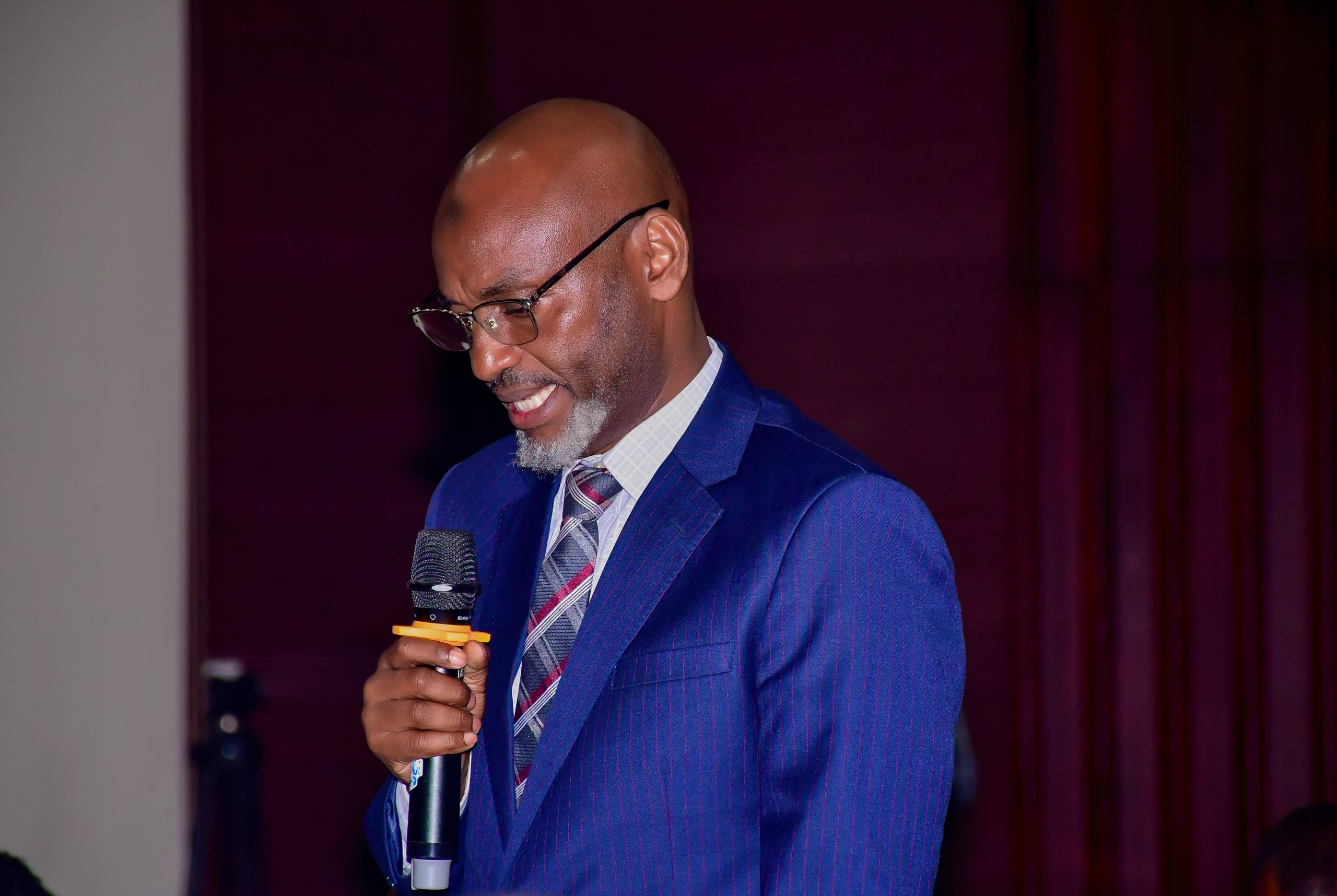
Hawa Cisé Wagué, World Bank Resident Representative in Burundi emphasizes that the World Bank (WB) has a significant commitment to Burundi. “We are working with development partners, including the African Development Bank (AfDB), the European Investment Bank, and the European Union. Others have also joined us, including the French Development Agency. With all these development partners, we are trying to support the government for the universal access to come true within the decade, and this is part of the World Bank’s initiative to provide approximately 300 million Africans with electricity by 2030,” she underscores.
Wagué reveals that for the World Bank, Burundi is a textbook case where maximum funding is earmarked for universal access to energy by 2030. “The portfolio has approximately US$400 million dedicated to the energy sector through various projects. Here I mention the Rusumo Falls project, a hydroelectric dam project that is already in operation, and the Jiji Murembwe project, which will soon be operational in 2025. With these two hydroelectric projects, we will have approximately 75 megawatts added to Burundi’s (existing) electricity production,” she said.
Burundi has set the ambitious goal of achieving universal access to electricity by 2030, in line with the Sustainable Development Goals, particularly SDG 7. The additional investments needed to achieve this goal in Burundi are estimated at US$3 billion.
Burundi periodically updates its NDC every 5 years to reflect progress made, changing events, and new technological opportunities. These updates involve adjustments to emission reduction targets, updates to adaptation strategies, additional financing, and improvements to monitoring and reporting mechanisms. The first NDC was drawn up in 2015 and updated in 2020. The latter will be implemented until 2030 but is to be evaluated and updated in 2025.
The recently published 2020-2025 NDC evaluation report shows that some of Burundi’s commitments have been met beyond expectations, others are being implemented, while some have not been met.
Indeed, the analysis results show that actions in the energy sector have avoided emissions of 98.084 Gg CO2 eq. (CO2 equivalent) for the unconditional target and 916.0774 Gg CO2 eq. for the conditional target. The Forests and Other Land Uses (FAT) sector is absorption sink for -632.973 Gg CO2 eq. for the unconditional target and -745.863 Gg CO2 eq. for the conditional target. The avoided emissions or absorptions without CO2 emitted by biomass are 87.5054 Gg CO2 eq.
In the unconditional scenario, the following activities were carried out: the development of rural forestry with reforestation of an area of 30,508 ha of artificial forest, resulting in absorptions of -600.3912 Gg CO2 eq., the development of the bamboo sector over an area of 2,741 ha with absorptions of -32.58241 Gg CO2 eq.
With the conditional scenario, the development of rural forestry through the creation of forest and agroforestry plantations on 34,703 reforested hectares resulted in absorptions estimated at -667.42 Gg CO2 eq., the rehabilitation of degraded environments in Mumirwa and Bugesera on 54,736 ha of already protected hillside areas with absorptions of -77.17 Gg CO2 eq., the protection of water sources by planting bamboo on 74.9 ha with absorptions of -1.26 Gg CO2 eq.
For the unconditional scenario, absorptions were -105.50 Gg CO2 eq. for the year 2021; -210.99 Gg CO2 eq. for 2022 and -316.49 Gg CO2 eq. in 2023, for a total of -632.97 Gg CO2 eq. for the three years. Under the conditional scenario, absorptions were estimated at -124.31 Gg CO2 eq. in 2021; -248.62 Gg CO2 eq. in 2022 and -372.93 Gg CO2 eq. in 2023, for a total of -745.85 Gg CO2 eq. for the three years.
Regarding the share of emissions by sector, the share of the agriculture, forestry and other land use (AFOLU) sector (emissions only) increased from 48% to 58% in 2010, then decreased to 45% in 2015. The share of the energy sector decreased from 43% to 36% in 2010, then reached 45% in 2015. The share of the waste sector ranges between 6 and 10%, while Industrial Processes and Product Use (IPPU) accounts for less than 1% of total national emissions.
Towards Sustainable Management: Dredging and Rehabilitation Initiatives for Rivers Flowing Through Bujumbura City
The World Bank issued a press release on July 14, 2024 announcing (Burundi Emergency Urban Resilience Project), locally known as “IBISAGARA BIRAMA” (Sustainable Cities), which was designed to address urgent flood control needs in Bujumbura, exacerbated by frequent flooding risks due to climate change and the recent risk of rising water levels in Lake Tanganyika.
According to the press release, the project will finance the urgent rehabilitation and dredging of rivers flowing through the city and will provide more permanent protection against flooding of the lake and rivers in areas with dense economic activity and vulnerable populations. It will also protect key infrastructure to prevent any interruption to the city’s water supply.
“The project is timely, given the increase in urban flooding in Burundi due to climate change. These floods affect a large portion of the population and cause annual losses for economic growth. The project will support key institutions to improve urban management with the objective of reducing flood risks while providing better early warnings and improving the capacity of public institutions and communities to respond to disasters,” said Hawa Wagué, World Bank Resident Representative in Burundi.
According to the same press release, with $113 million in financing (including $60 million in IDA grants and $53 million from the Crisis Response Facility), the project aims to address urban flooding problems in Bujumbura and lay the foundations for the provision of more climate-resilient urban services in Burundi. Efforts will focus on emergency flood response measures, climate-resilient infrastructure interventions to reduce flood risks, flood early warning systems, and the development of risk-informed land-use plans. The project is expected to benefit the population of Bujumbura, including more than 200,000 people directly affected by the flood emergency.
The National Adaptation Plan (NAP), a strategic turning point for Burundi’s climate resilience
Burundi has just taken a decisive step in its fight against the effects of climate change with the official launch, on February 7, 2025, of the project to draw up and implement the National Adaptation Plan (NAP). Led by the Ministry of the Environment in partnership with the United Nations Development Programme (UNDP), the project receives a funding of 7,183,398,362 BIF, or US$2,431,753 from the NGO Green Climate Fund.
Signed in 2023 by the Minister responsible for the Environment, Ir. Prosper Dodiko, the NAP is a continuation of the National Adaptation Action Plan (NAAP), previously implemented by the Burundian government. Its objective is to integrate climate issues into national development planning and budgeting in order to strengthen the country’s resilience to climate change.
A strategic response to environmental challenges
The NAP aims to strengthen national climate change policy by building institutional and individual capacities. This includes integrating climate issues into decision-making processes and encouraging investments for adaptation to environmental hazards such as flooding, seasonal variability, and the rising waters of Lake Tanganyika.
The adaptation priorities defined by this plan cover several strategic sectors for Burundi, including farming, ecosystems and landscapes, and water resources. In addition, health, infrastructure and transportation, and the energy sectors are also covered.
With the support of UNDP and financial partners, the implementation of the NAP marks a decisive turning point for Burundi in its fight against the impacts of climate change.
Lack of financing obstructs developing countries
The 29th United Nations Climate Change Conference (COP 29) has been taking place in Baku, the Azerbaijani capital, since November 11, 2024. Numerous Heads of State and representatives of various countries around the world participated in this event, including a delegation from Burundi that was led by Burundi’s Vice President Prosper Bazombanza. The issue of insufficient financing raised major concerns.
Indeed, agreeing on a new amount of aid to developing countries, to finance their energy transition and minimize greenhouse gas emissions, their adaptation to climate change, and finally, to finance repairs after unavoidable disasters, was the main goal of the COP 29. So far, rich countries have promised $100 billion in aid per year between 2020 and 2025, a promise that was not kept on time, which greatly strained North-South relations and still leaves vulnerable countries with a bitter taste.
In his speech, Antonio Guterres, Secretary-General of the United Nations, emphasized that developing countries wishing to take action against climate change face numerous obstacles, such as insufficient public finances, the prohibitive cost of capital, the increasing frequency of climate disasters, and debt servicing that weighs heavily on national budgets. “Developing countries cannot leave empty-handed,” he warned. He also urged climate change stakeholders, particularly wealthy countries, to reduce their greenhouse gas emissions.
The African continent alone has requested USD 1.3 trillion per year until 2030. “We do not want this target to remain a mere political figure, a nice-sounding reference, but rather to truly reflect the needs of developing countries,” said Tosi Mpanu Mpanu, negotiator for the Democratic Republic of Congo (DRC) at COP 29. For the African group of countries, it is essential to abide by the goals of the Paris Agreement, which aims to limit temperature rise to 1.5°C by the end of the century, he stressed.
The new draft agreement on climate finance in developing countries is “totally unacceptable,” the president of the African group at COP 29 in Baku reacted on Friday, November 22, 2024. “The proposal made by developed countries to provide $250 billion per year by 2035 is totally unacceptable and inadequate to implement the Paris Agreement,” declared Kenyan negotiator Ali Mohamed, on behalf of the group.
“Developed countries and polluters bear a major responsibility for the climate crisis. To this end, they must assume their fair share,” underscored Faure Gnassingbé, President of the Togolese Republic. He also called on wealthy nations for help in addressing this crisis, in accordance with the commitments made in international agreements.
COP 29 concluded with a groundbreaking agreement on climate finance: $300 billion annually by 2035 to help countries protect their populations and economies from climate disasters and share the vast benefits of the rise of clean energy. Addressing all delegates at the closing plenary session, UN Climate Change Executive Secretary Simon Stiell called the new financial goal an “Insurance Contract for Humanity.” However, he emphasized one important point. “Like any insurance contract, it only works if premiums are paid in full and on time,” he said.
According to the African Development Bank (AfDB), the African continent receives only 3% of global climate finance flows. Faced with this reality, African countries emphasize the importance of improving their access to this crucial financing. Given the heavy debt burdens facing many African nations, it is imperative that these funds be distributed primarily in the form of grants rather than loans that require repayment with interest.
What remains is to determine what initiatives or steps the governments concerned could take to access available climate financing, as well as how these funds are integrated into national adaptation and mitigation plans.
Rénilde Ndayishimiye, Director of Environment and Climate Change at the Burundi Environmental Protection Authority (OBPE), indicates that developed nations are expected to provide substantial funding, as discussions take place both at the national level and as a group of developing countries. However, she points out that once agreements are reached, it is up to the recipient States to establish projects and partnerships, whether with other countries, international agencies, or private actors, to secure concrete financing.
Furthermore, Ndayishimiye mentions that Burundi has already taken important initiatives by developing a national climate change policy, which must be integrated into all sectors such as agriculture, forestry, energy, health, water resources, and transportation.
She emphasized that this cross-cutting approach can accelerate the implementation of adaptation and mitigation strategies. The main challenge now lies in the ability to set up bankable projects. In this regard, Ndayishimiye noted that the key to accessing available financing, particularly through the Green Climate Fund and other existing climate financing mechanisms, is to present well-structured and financially viable initiatives.
Youth: A Key Player in Combating the Harmful Effects of Climate Change
Burundi is a country with a predominantly young population. According to demographic data, approximately 65% of the population is under 25 years old, meaning that two-thirds of Burundians fall into this age group. This demographic situation represents both a challenge and an opportunity for the country’s development. Statistics reveal that 43.2% of the population is U15 years old, while 53.3% is under 20. These figures reflect a younger age pyramid, which directly impacts public policies in the sectors of education, health, employment, to name but a few.
In this fight to address the climate change challenges, Burundian civil society is rightly called upon to engage in in-depth reflection on the means to develop appropriate climate solutions based on the three pillars of climate action: mitigation, adaptation, and resilience.
Ishaka 2250 is a youth organization committed to combating the harmful effects of climate change. Audry Rusangwa, Executive Director of the organization, explains that Ishaka 2250 is a youth organization committed to promoting the Sustainable Development Goals (SDGs) and initiatives aimed at empowering young people and women to contribute to achieving the Agenda 2030. He emphasizes that combating climate change is one of the strategic pillars of their action. “We primarily work to transform victims of climate change into agents of change and solution providers. Our mission is to support this transition by making those affected by these challenges champions of climate action,” he says.
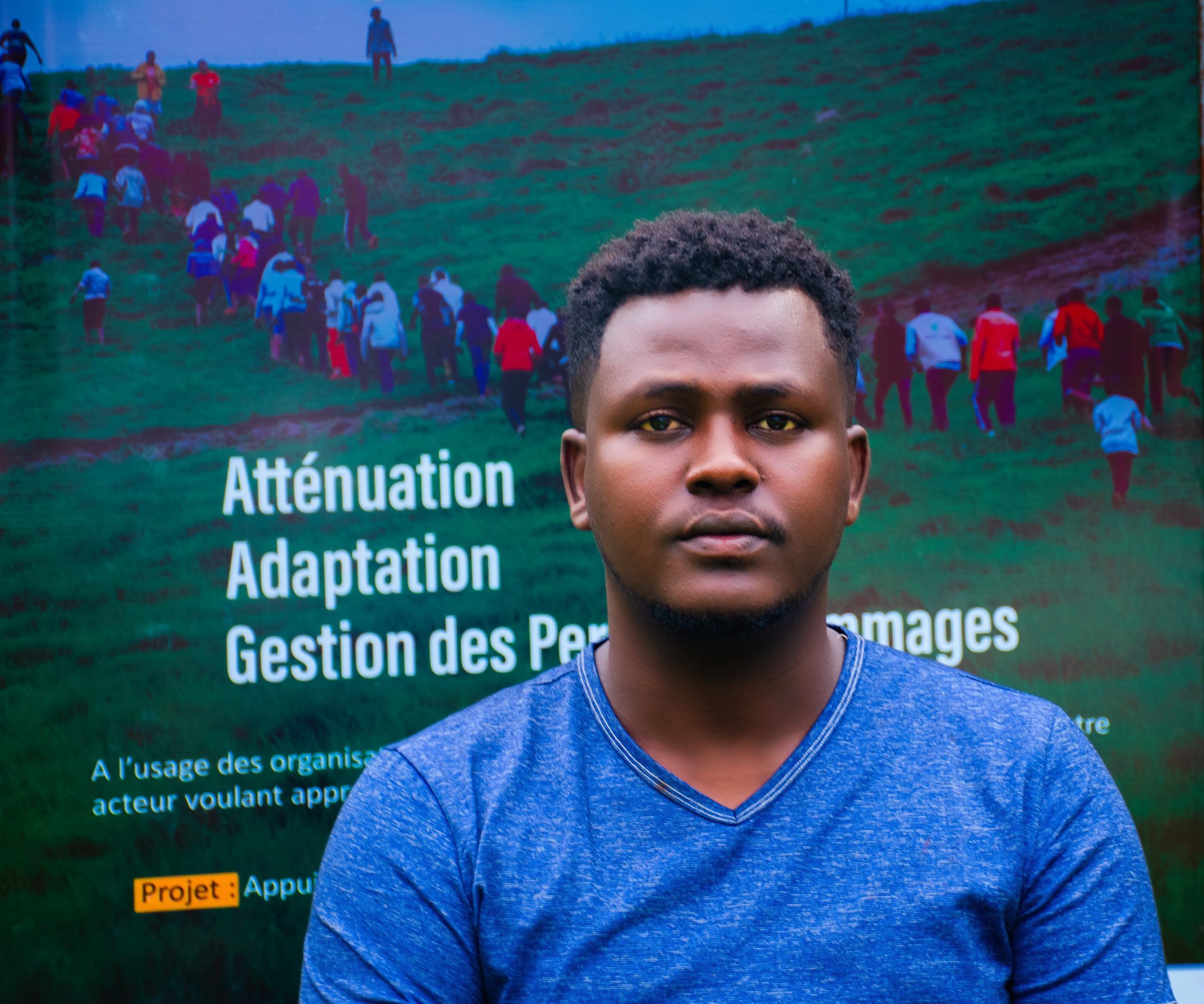
Rusangwa discusses the specific initiatives implemented to mitigate the effects of climate change. “Our actions aim to reduce climate risks and limit the negative impacts of global warming. Our efforts are primarily focused on two areas: awareness-raising and active involve from a younger age, as a Kirundi saying goes: “Igiti kigororwa kikiri gito (Help a tree stand up straight when it is still a sapling),” he says.
Rusangwa points out that it is easier to instill good environmental practices in younger generations than to change habits at an older age. These young people are trained and engaged in concrete actions to reduce greenhouse gas emissions. “By giving them the necessary tools and knowledge, we prepare them to become agents of change and leaders in climate action. Then, we implement concrete initiatives to limit greenhouse gas emissions and promote sustainable resource management,” he reveals.
Rusangwa emphasizes that among those initiatives, the emphasis is on efficient waste management, raising awareness of the importance of sorting, recycling, and reducing waste. He also points out that plastic waste and used tires are transformed into furniture and decorative objects, thus contributing to their reuse and reducing pollution. He also mentions that investments are made in reforestation, as the latter creates carbon sinks capable of absorbing carbon dioxide (CO₂) and limiting the effects of climate change.
He says that all those actions are part of their commitment to mitigating the impacts of climate change and building a more sustainable future. “Our goal is to transform the victims of these changes into agents of change, empowering them to be part of the solution,” he explains.
Regarding reforestation, Rusangwa is pleased with the results already achieved in terms of CO2 sequestration. According to him, the organization assesses the amount of carbon dioxide (CO₂) sequestered per tree to measure the impact of reforestation. He notes that to date, over 5,000 tonnes of CO₂ have been captured nationwide through reforestation efforts. He emphasizes that these actions are exclusively part of climate change mitigation, independent of adaptation measures.
He also emphasizes that this amount of sequestered carbon could be accounted for and potentially valued on the carbon market. According to the young activist, the figures change each year based on new plantings. “For example, taking the eucalyptus species as a reference, one tree can absorb up to 25 kg of CO₂. Thus, 1,000 trees would capture approximately 25 tonnes of CO₂, and with a more ambitious programme, this figure could reach 1,000 tonnes,” he illustrates.
Based on current forecasts, he hopes that by the end of 2025, efforts will be doubled: reaching 10,000 tonnes of CO₂ sequestered solely through reforestation and the creation of carbon sinks.
Rusangwa explains that Ishaka 2250 places particular emphasis on mitigation and adaptation efforts and encourages other youth organizations to adopt this approach.
The socioeconomic effects of El Niño, as presented through alarming figures, heart-touching testimonies, and expert analysis, reveal a reality that is not only complex but also, and above all, worrying. Indeed, this climate phenomenon highlights not only the vulnerability of individuals and infrastructure and economies, but also the inescapable need to adopt preventive measures and strengthen international cooperation. Climate solutions underway, though encouraging, must be accelerated and adapted to meet the growing challenges posed by extreme meteorological events.
It is therefore up to all stakeholders – government, businesses, the international community, and Burundian citizens , to resolutely commit to a collective approach to mitigate these negative impacts and prepare for a more resilient future. Moreover, with regard to climate uncertainty, innovation, the use of new information and communication technologies (ICTs), the adoption of artificial intelligence, and solidarity are emerging as essential levers for transforming the threat of El Niño into an opportunity.
